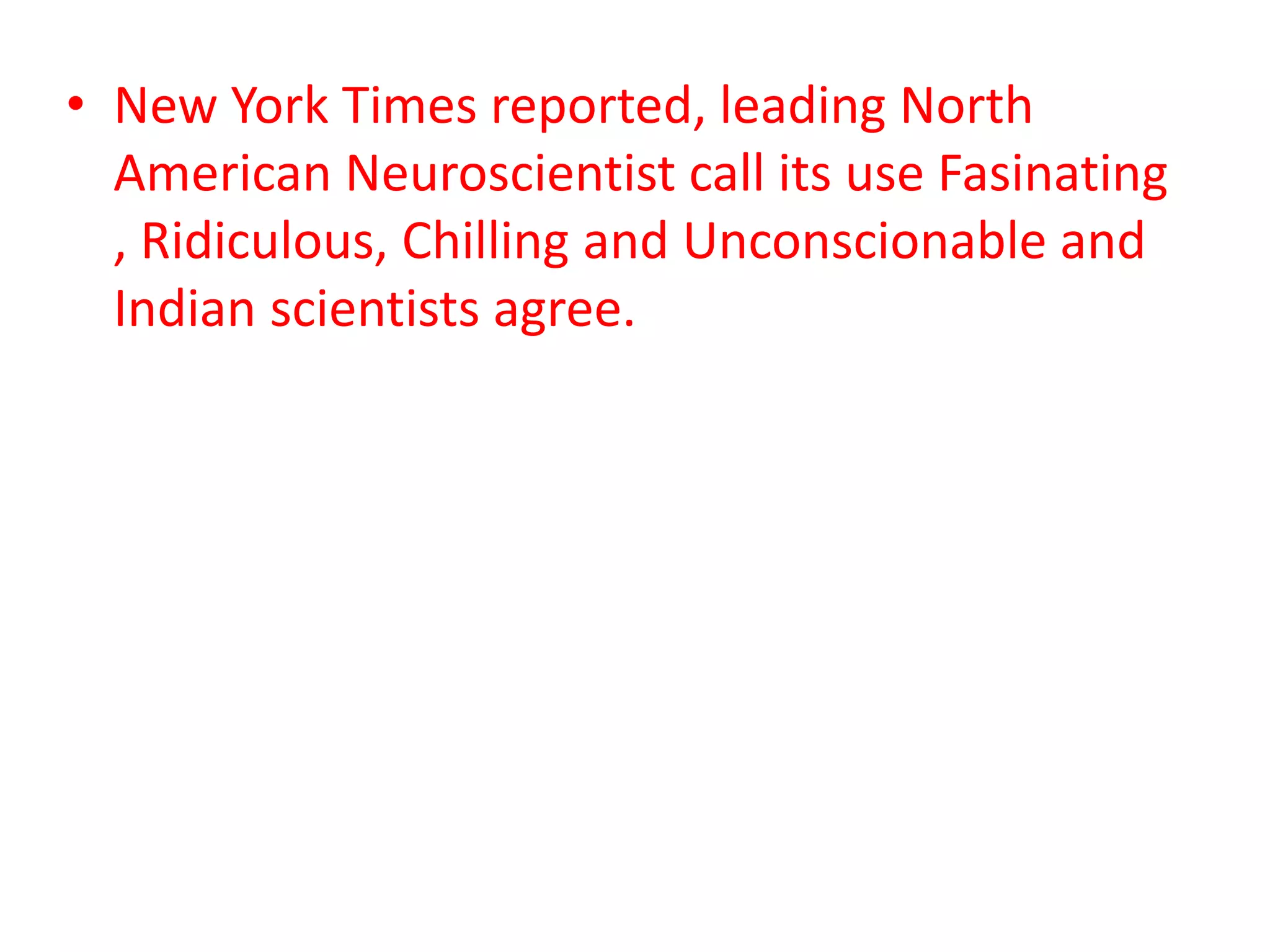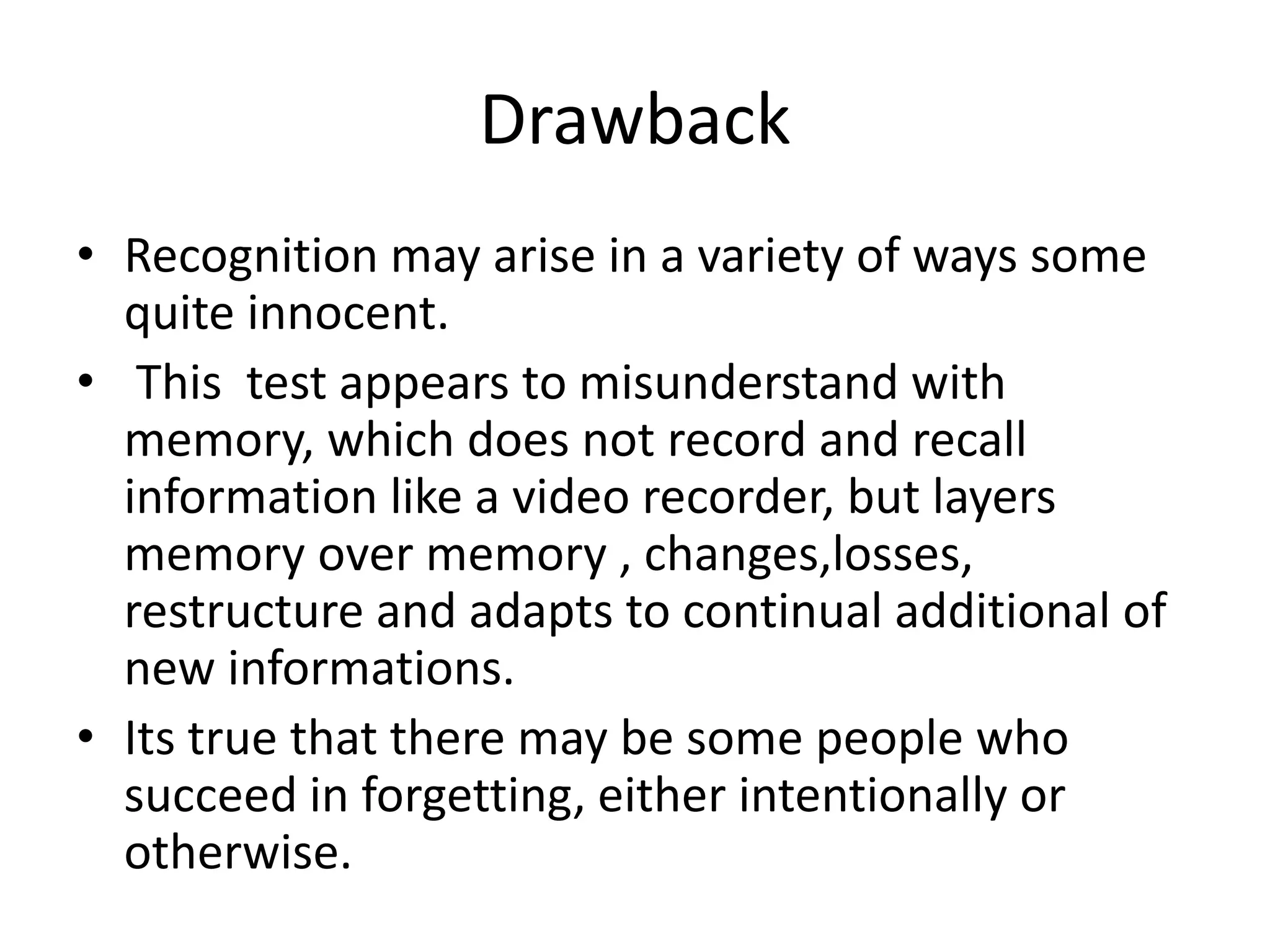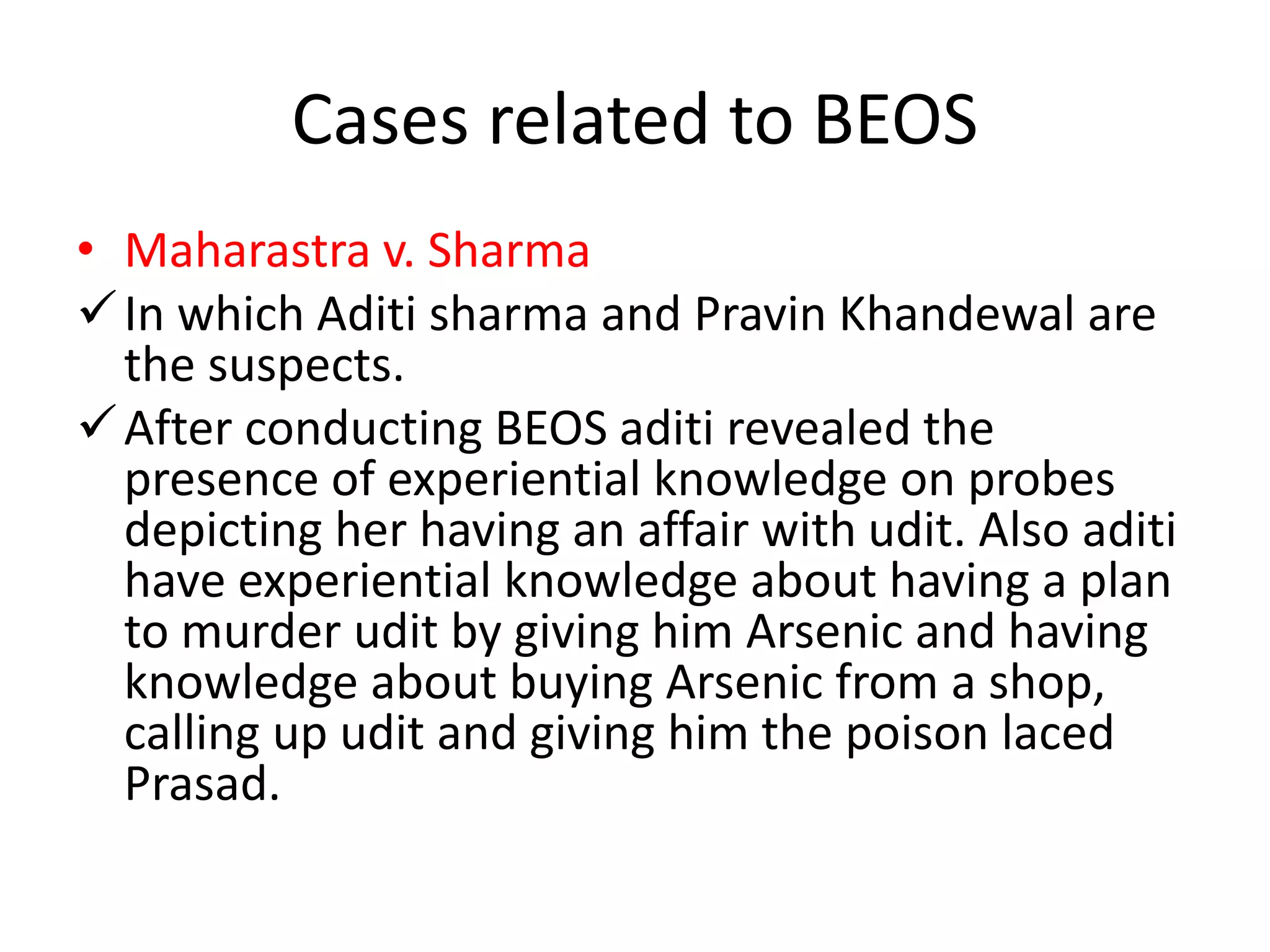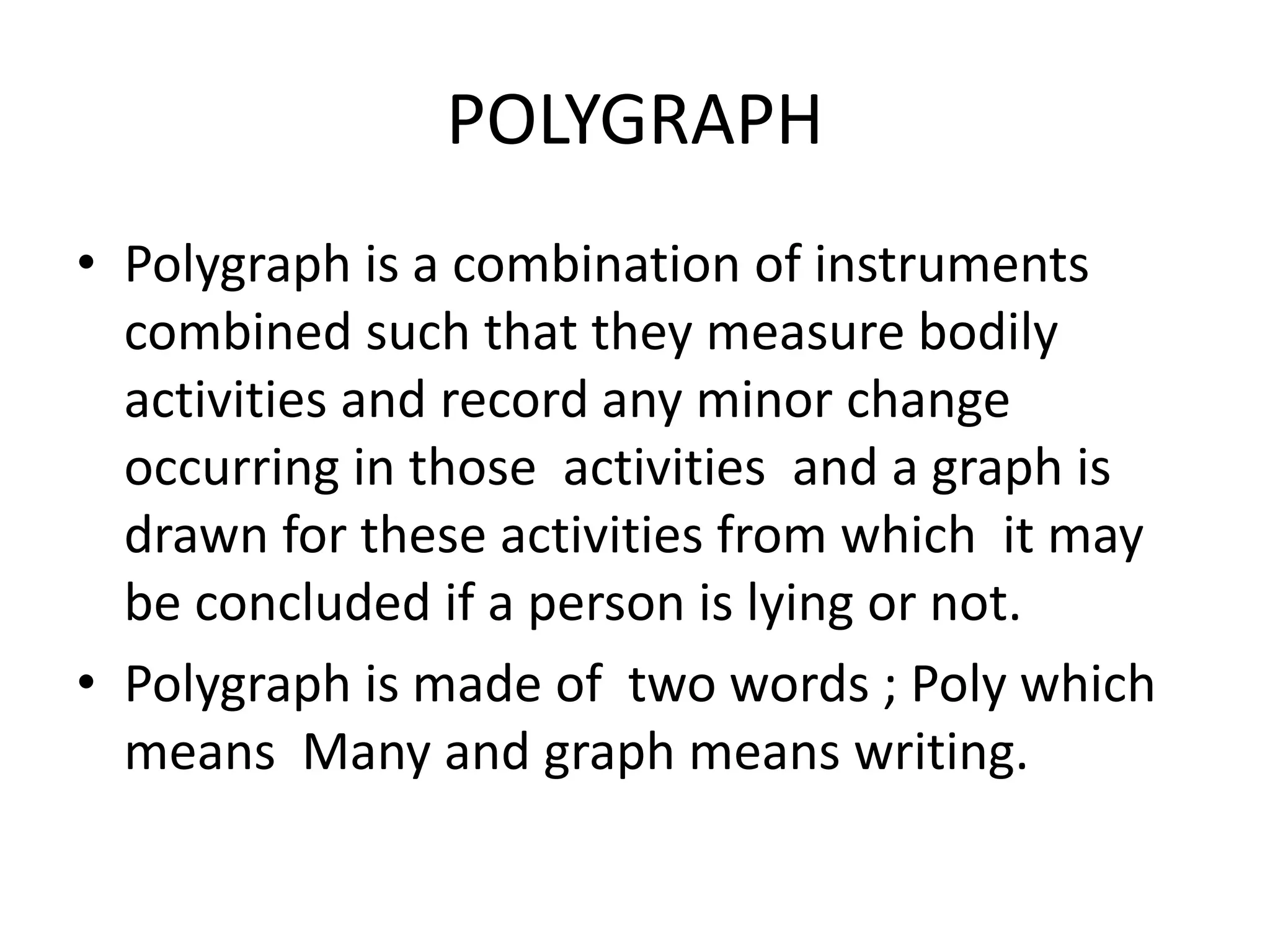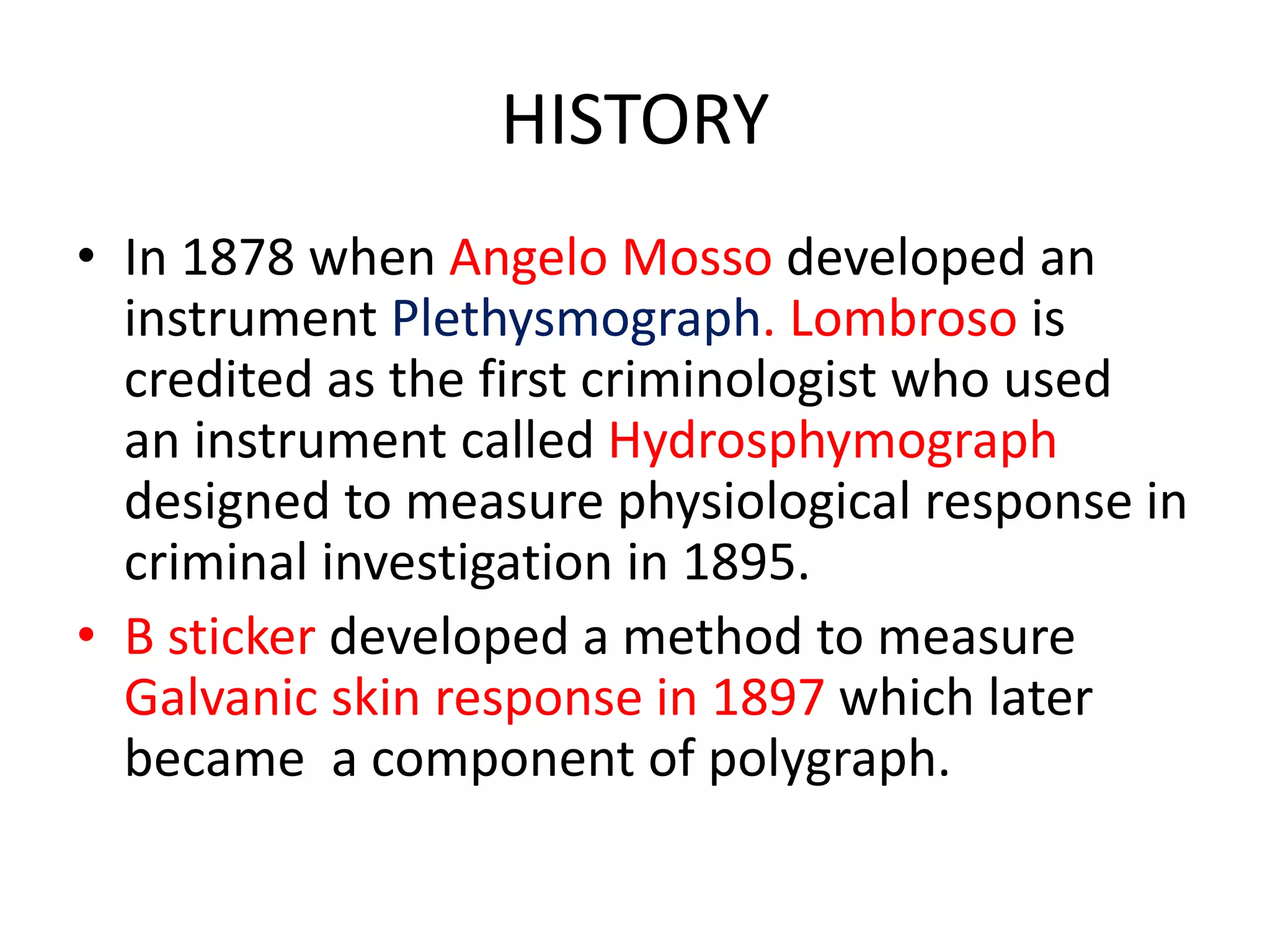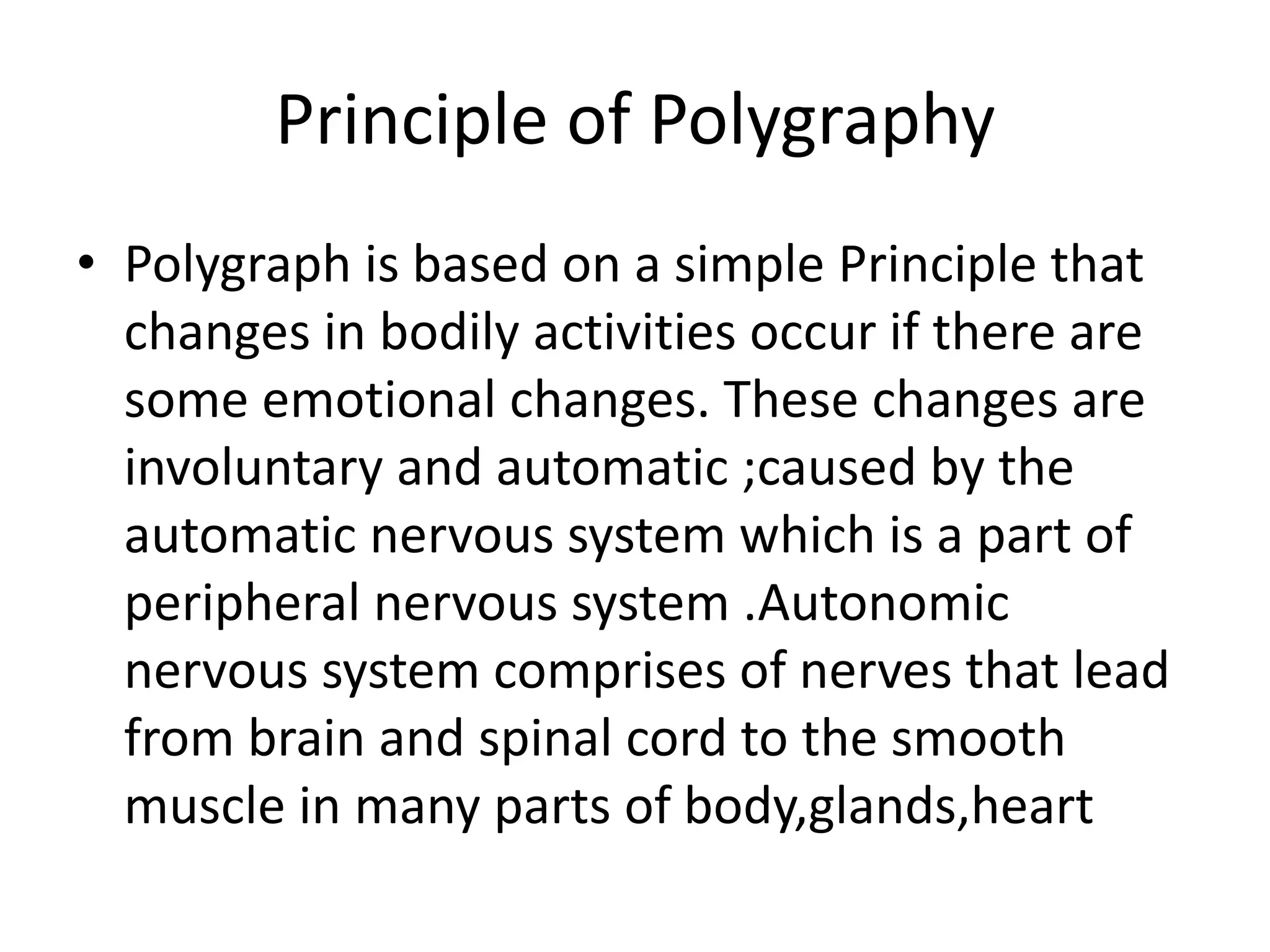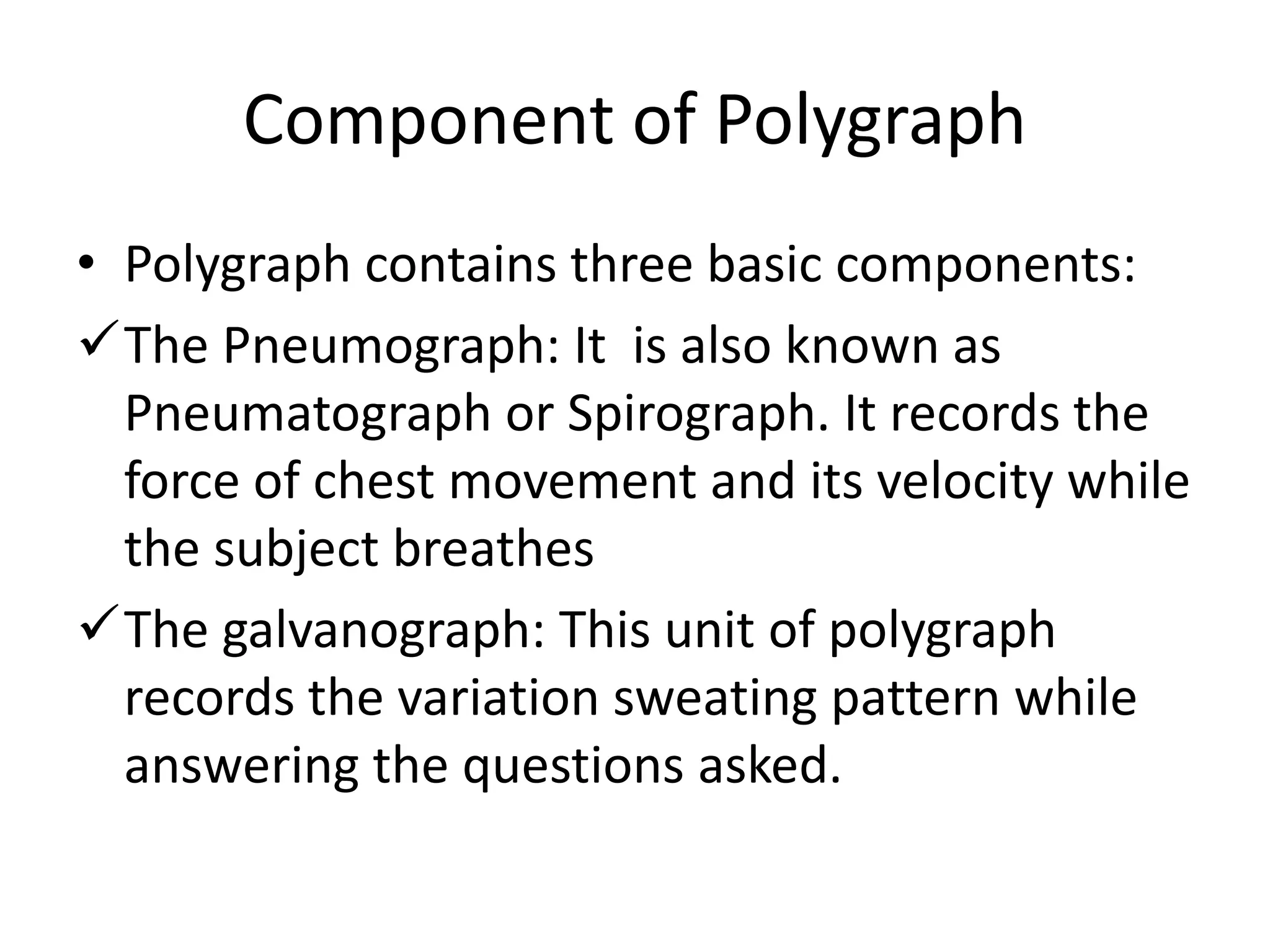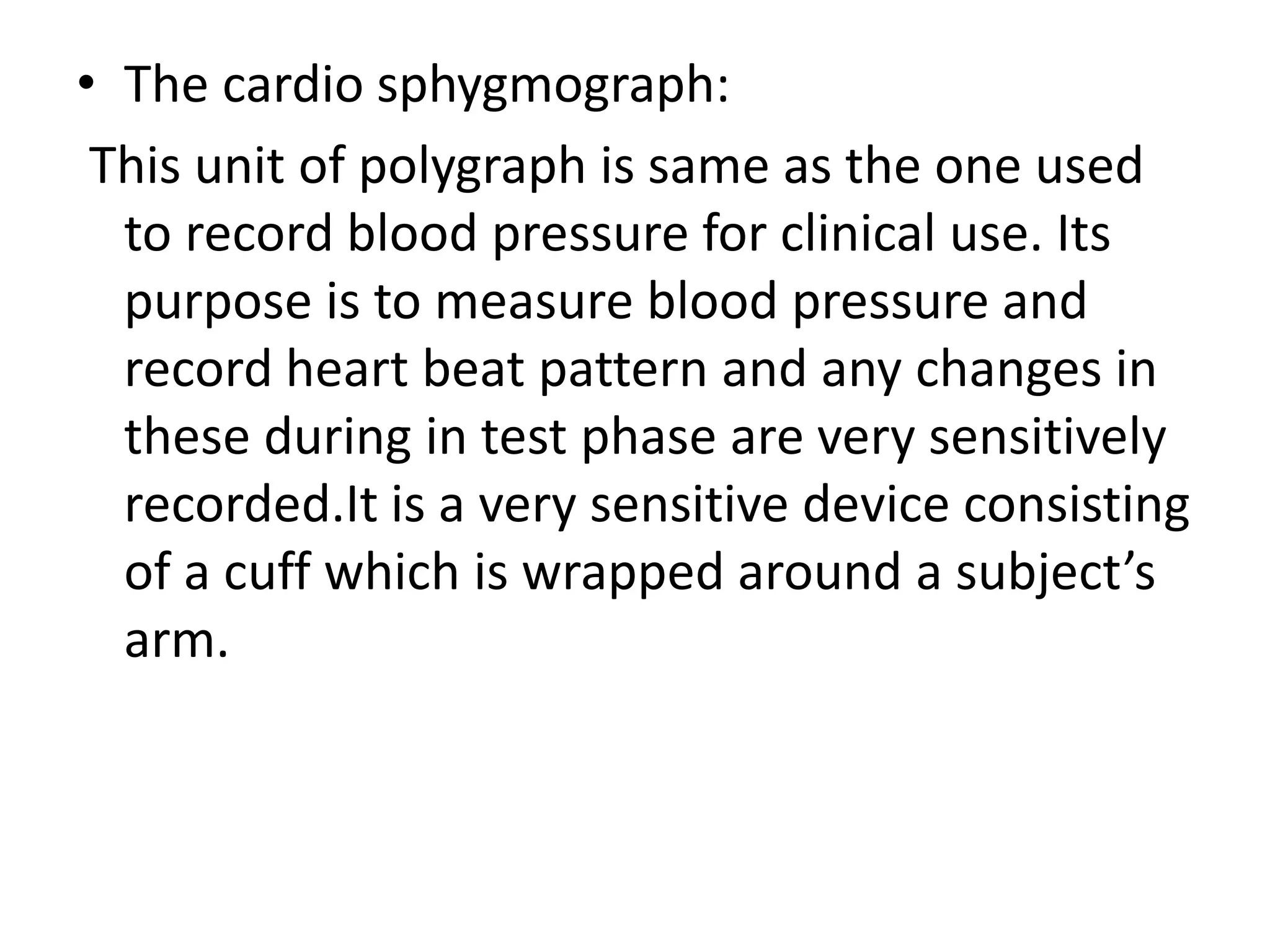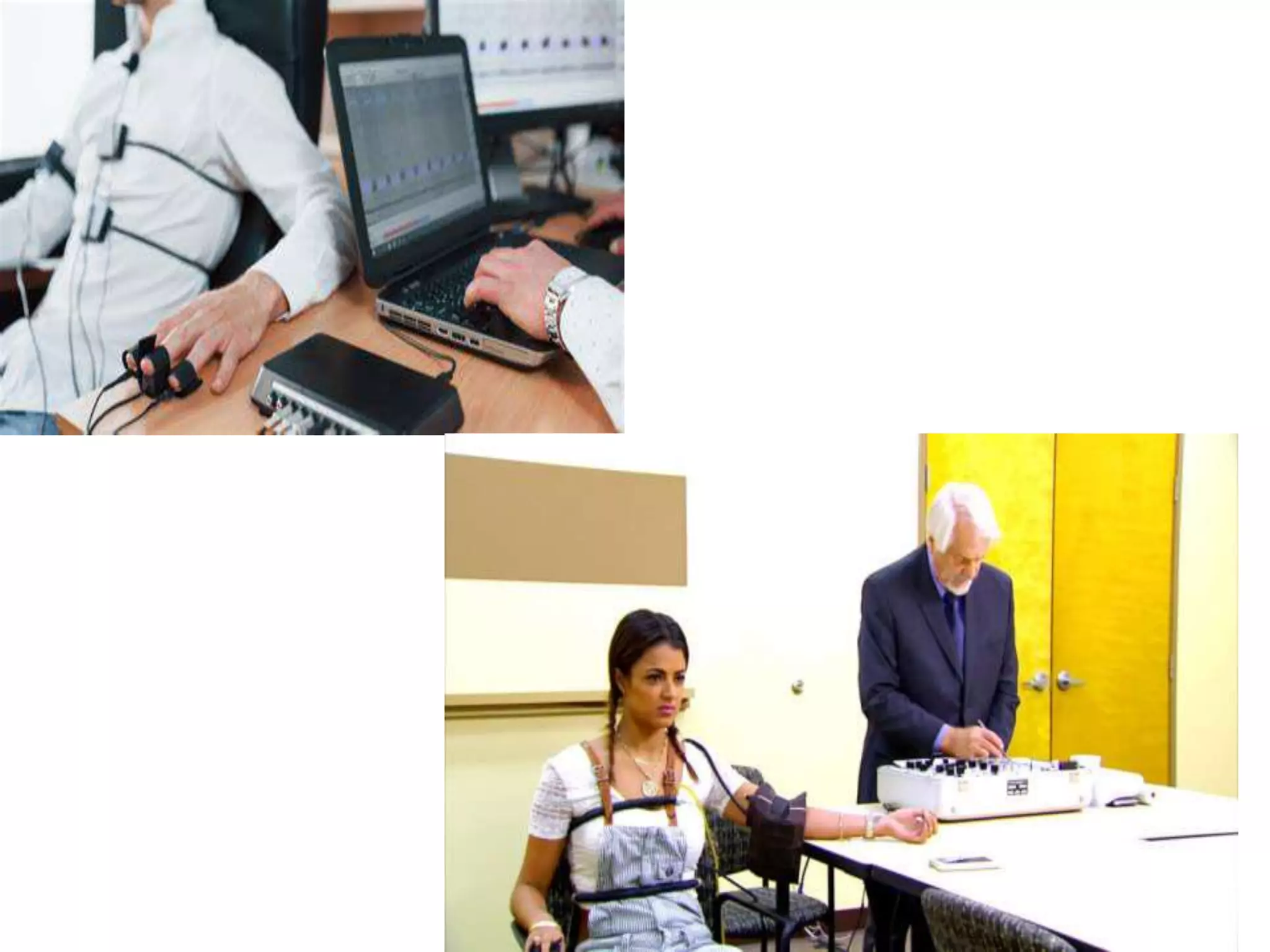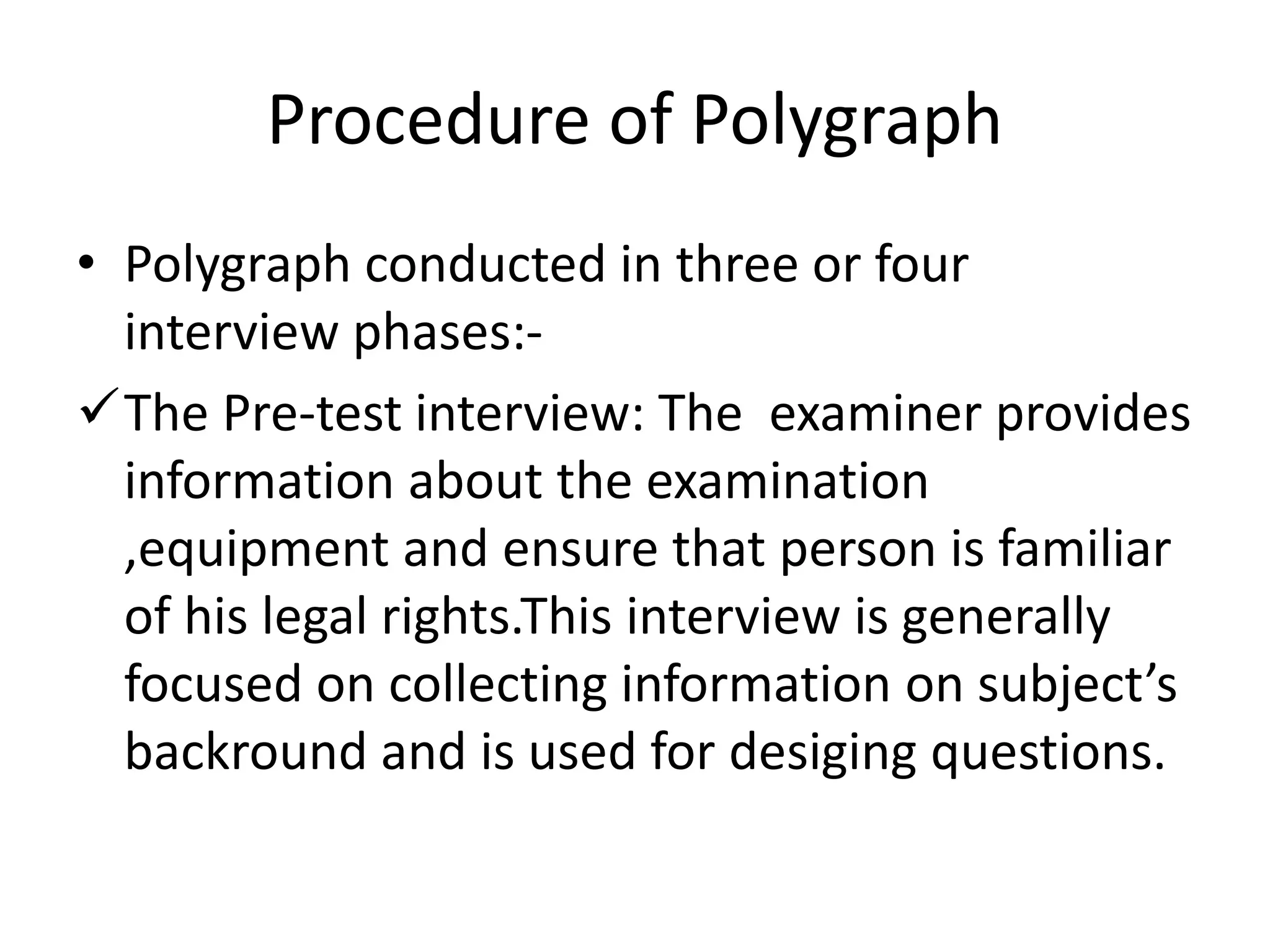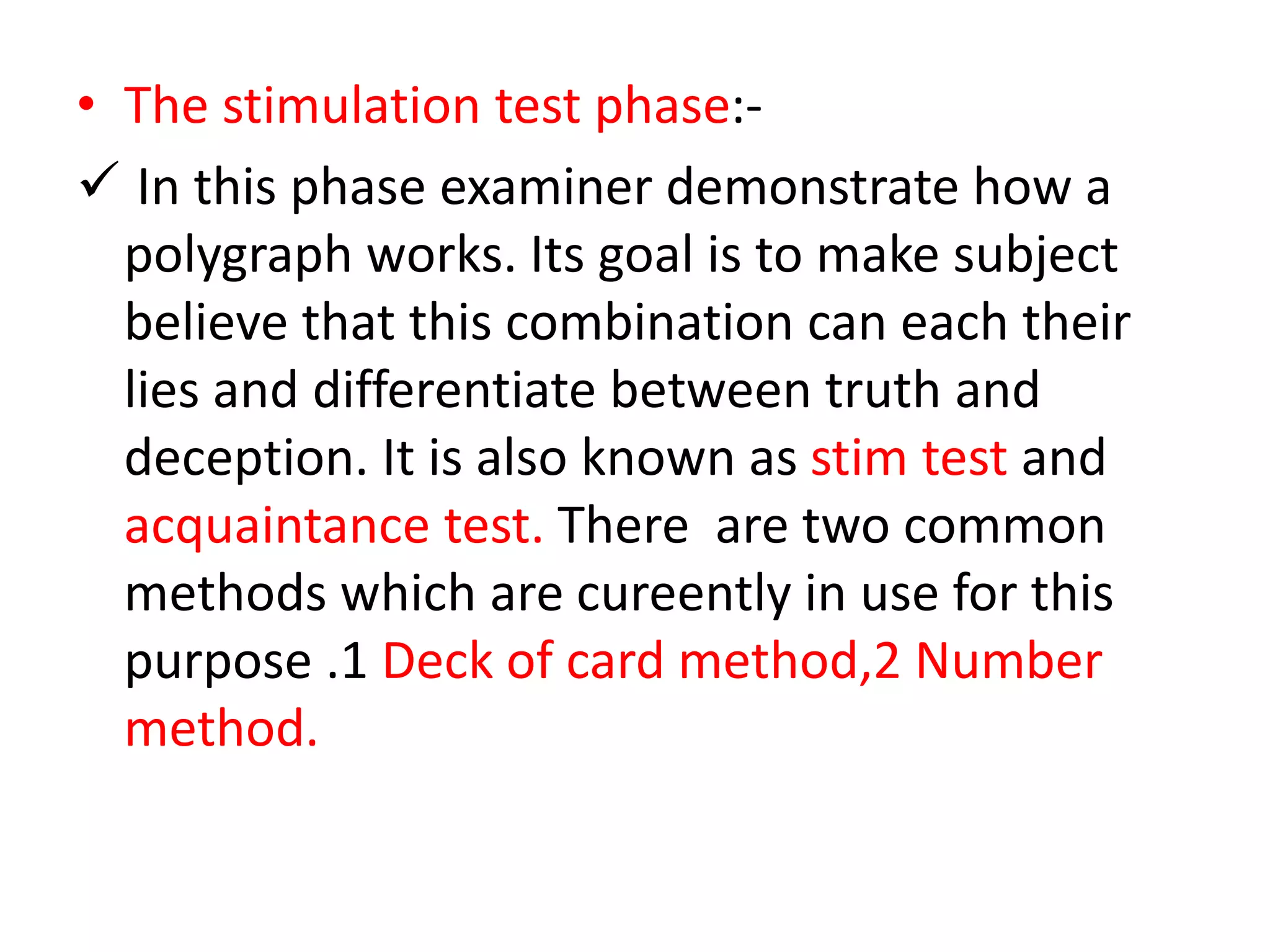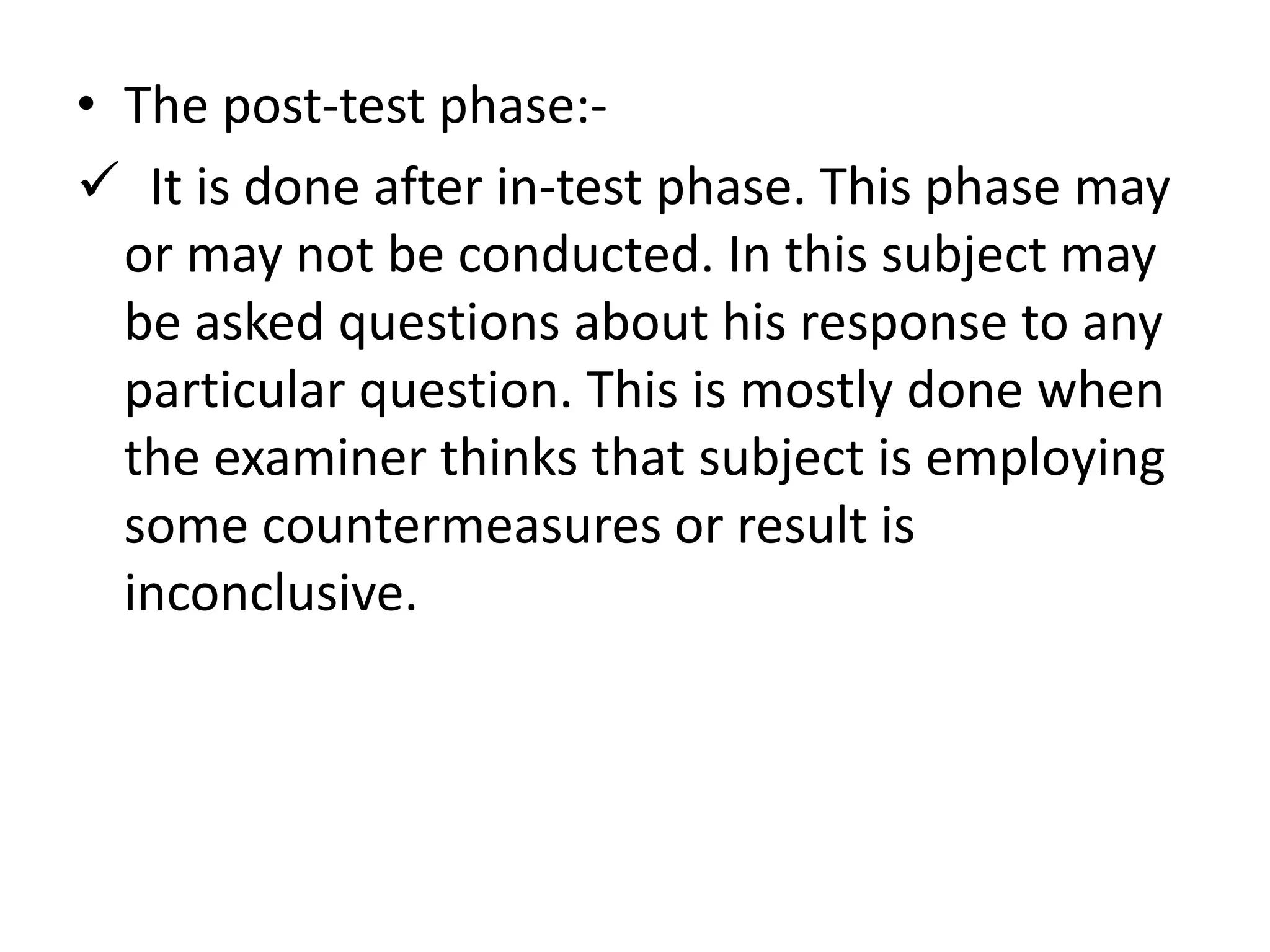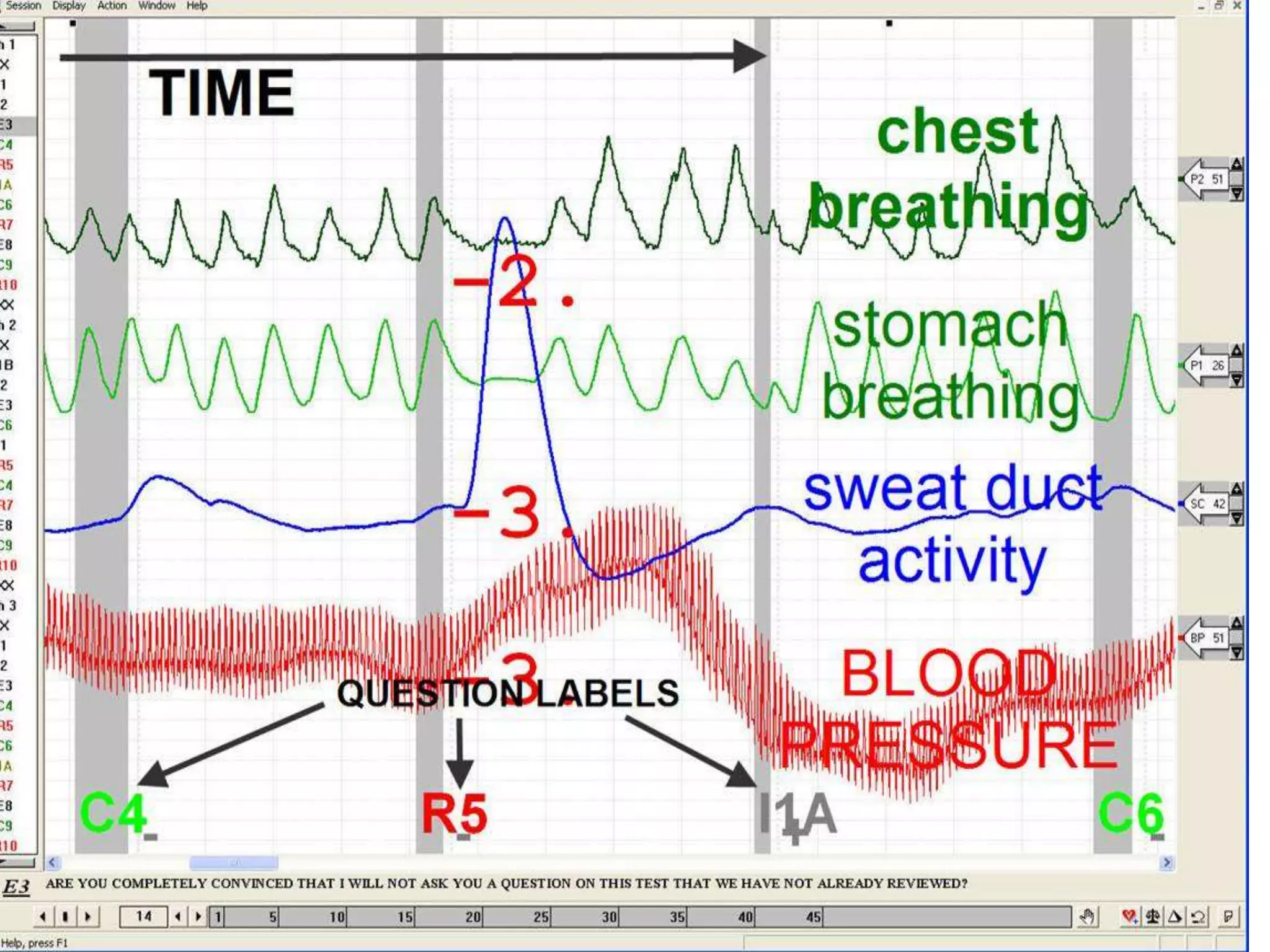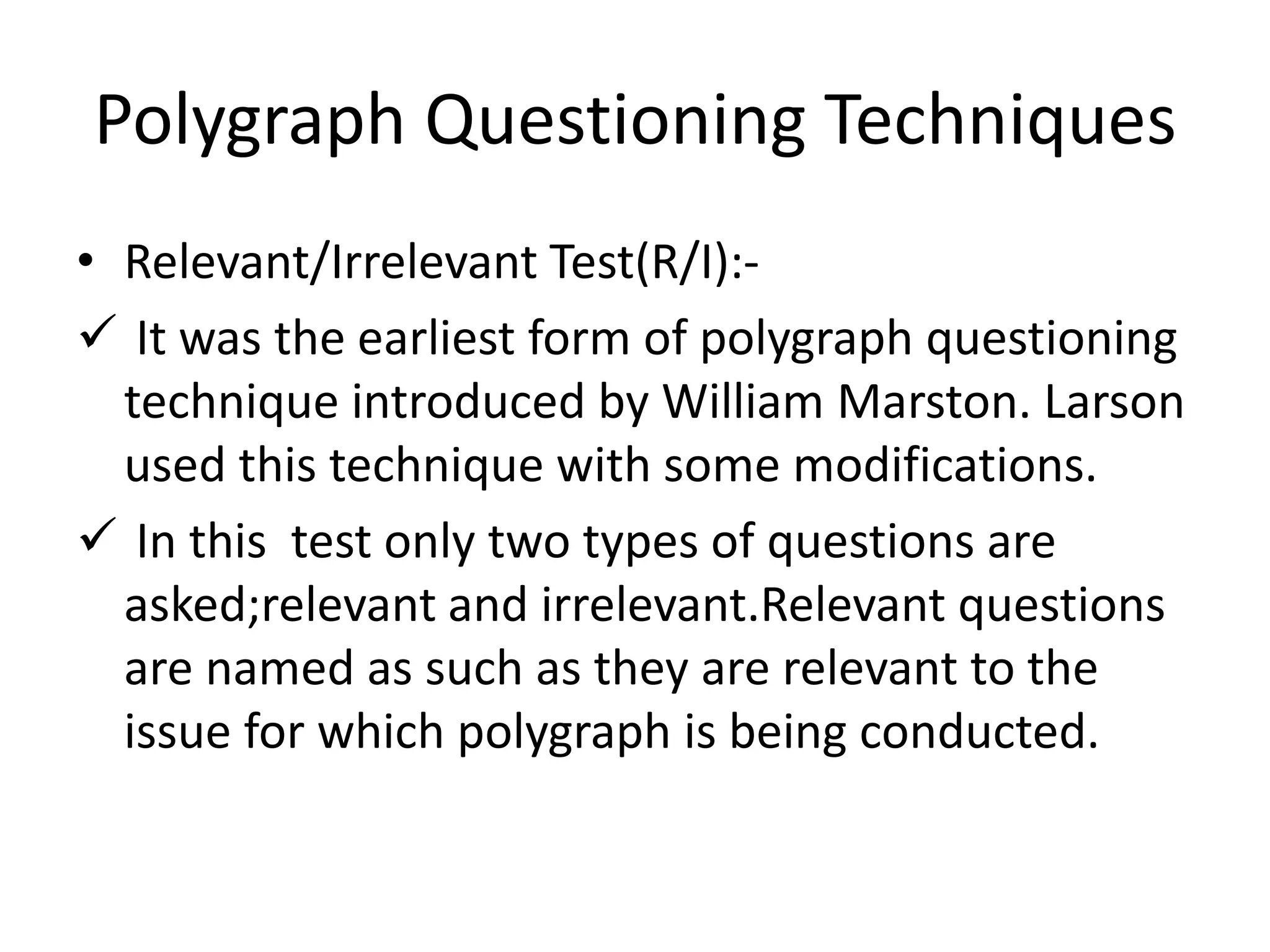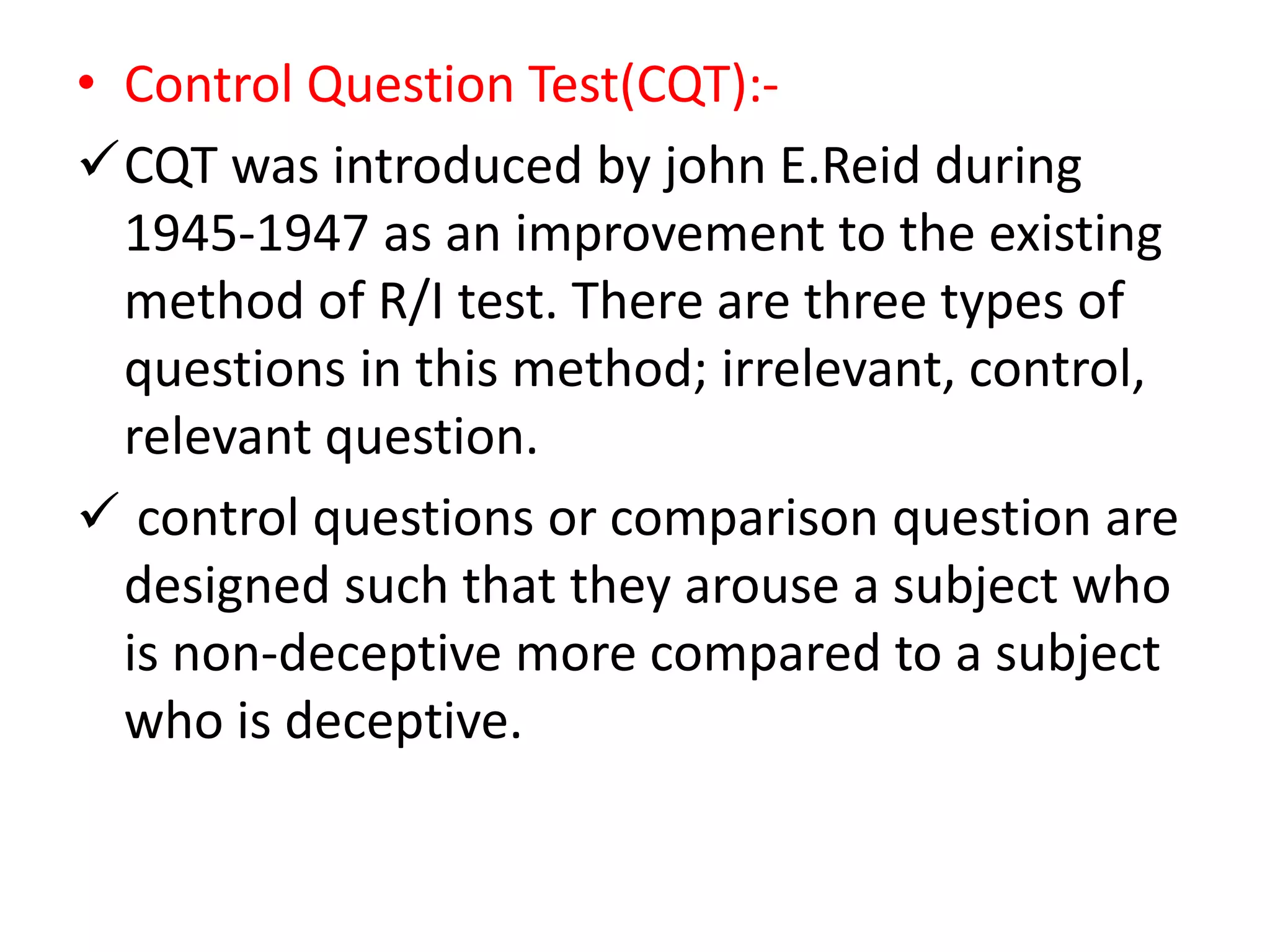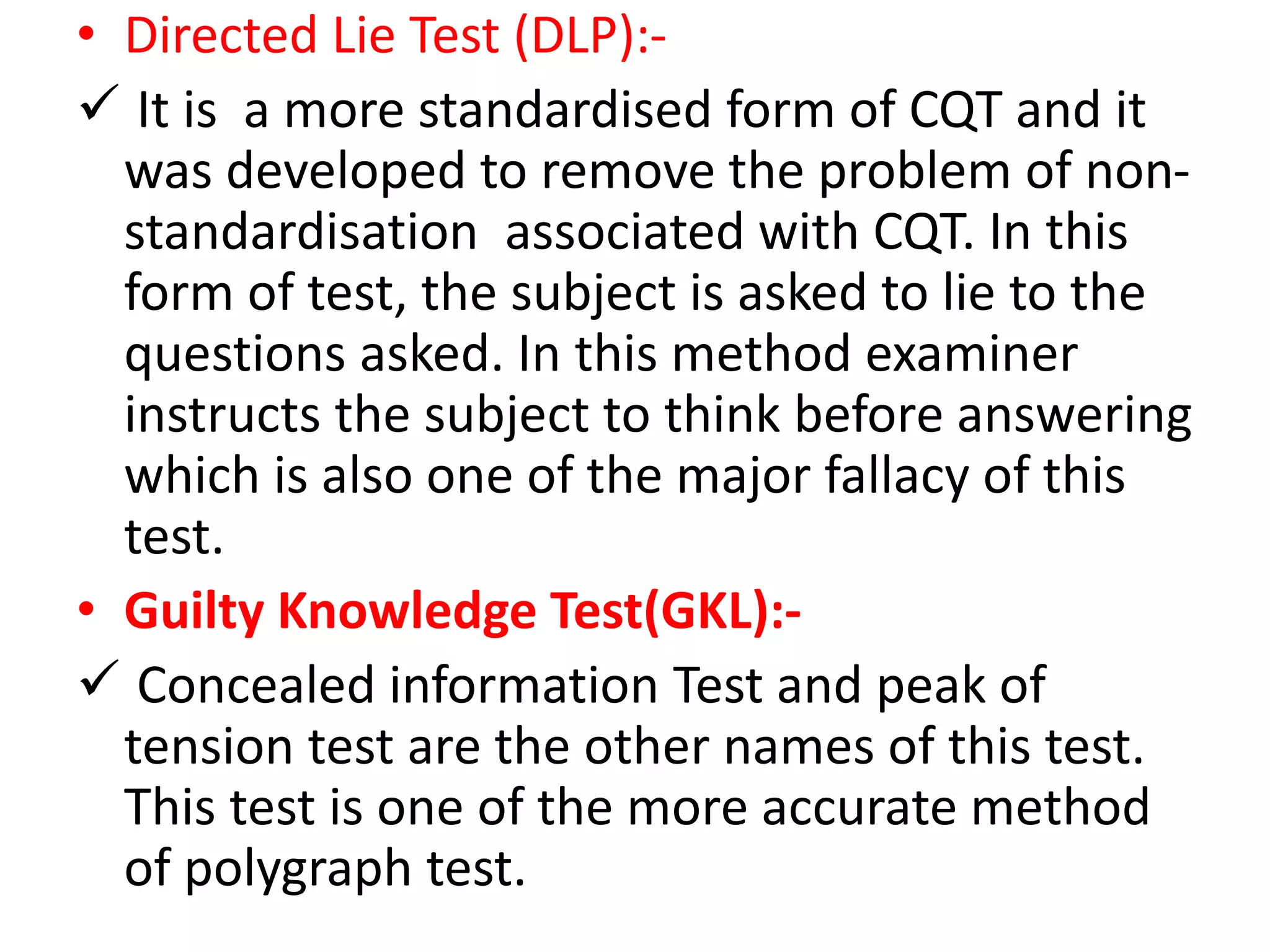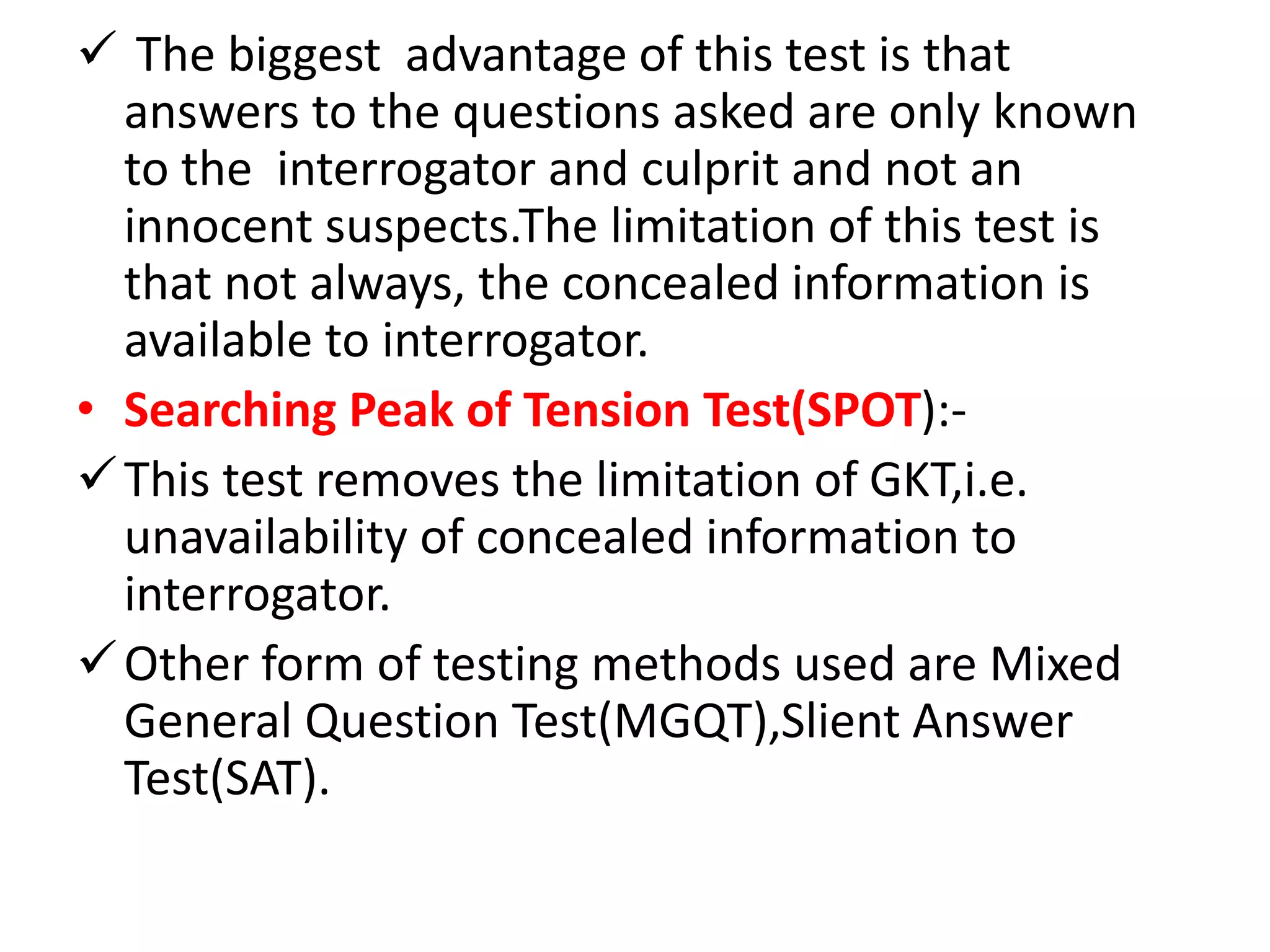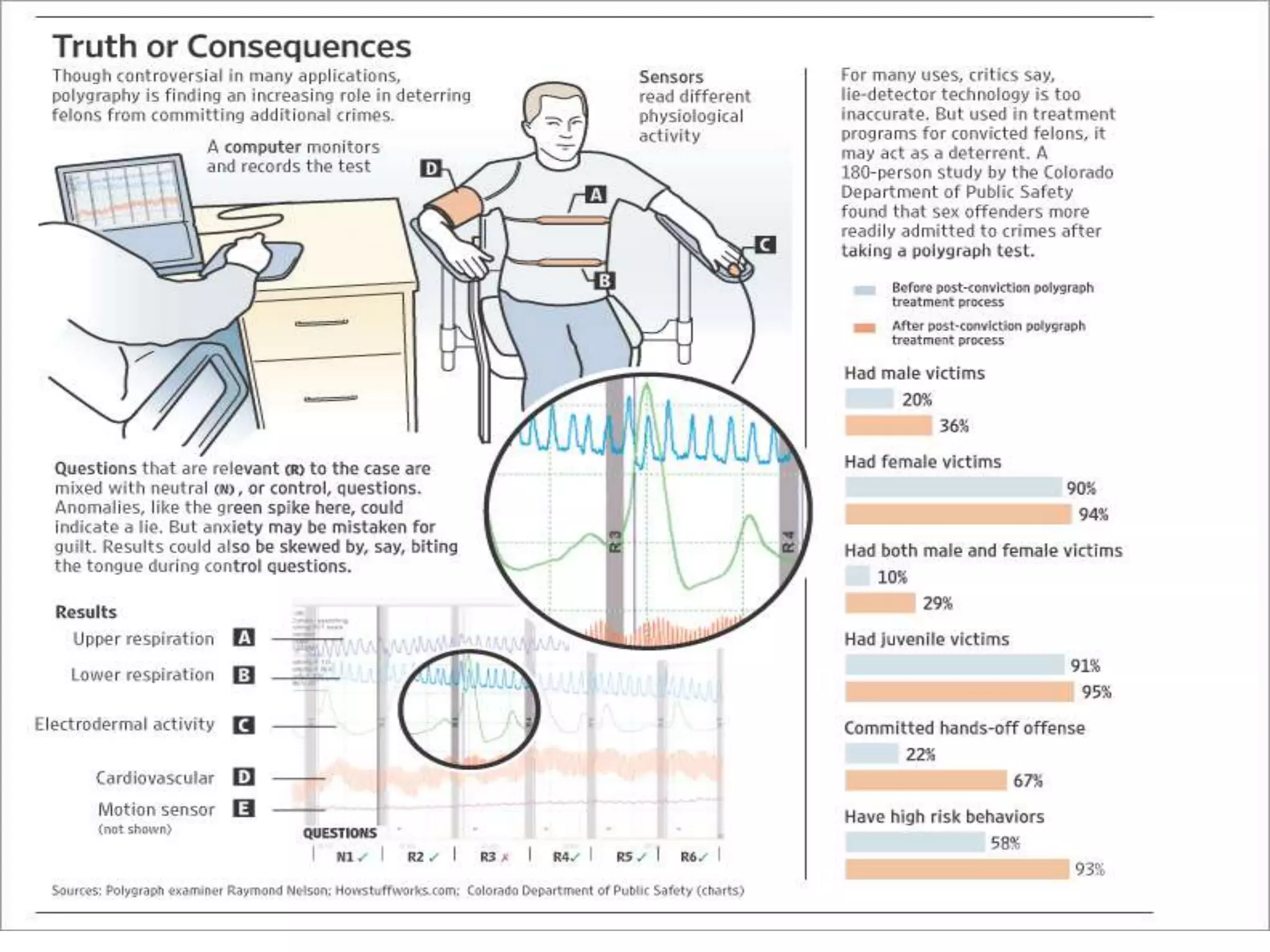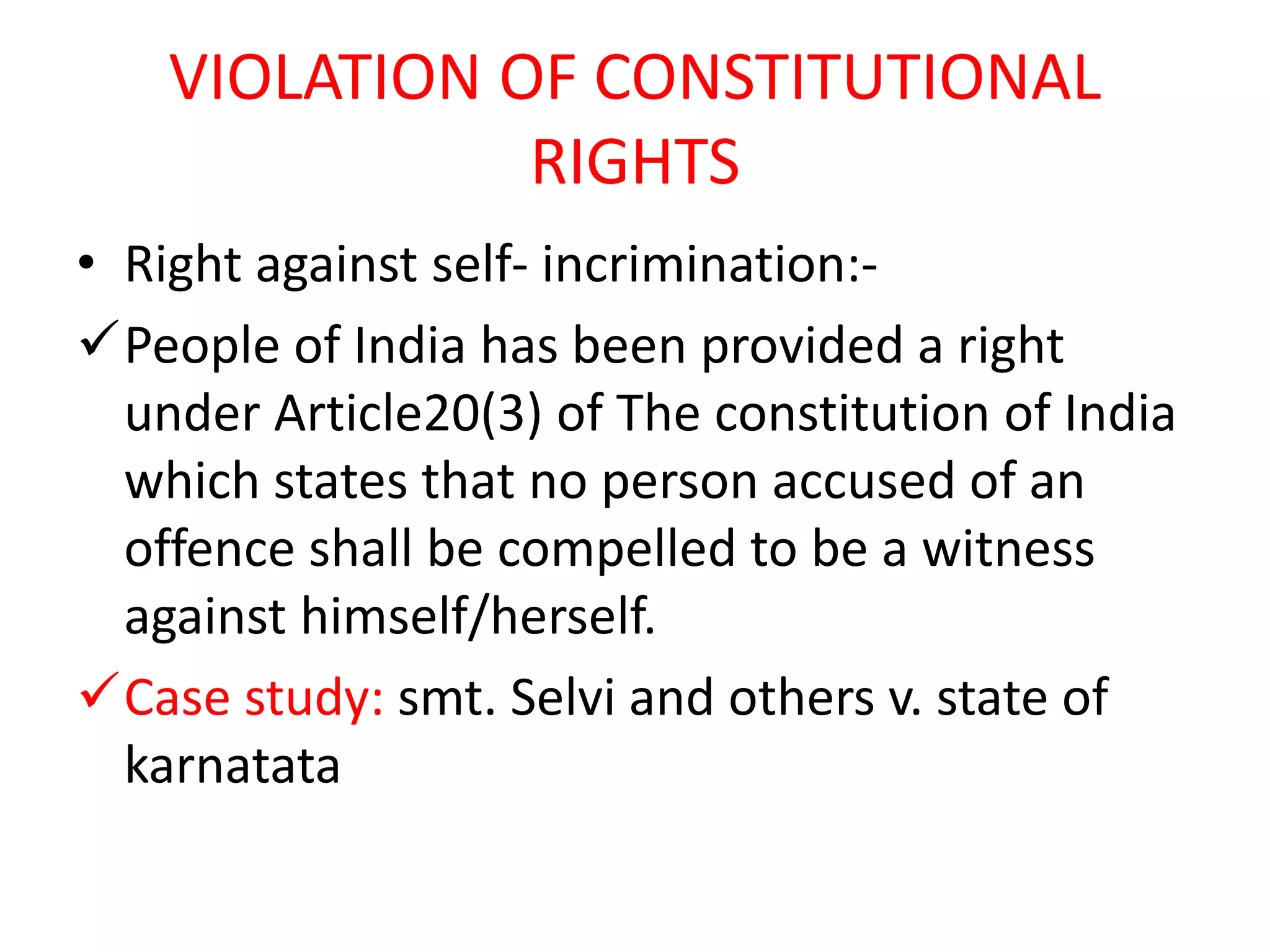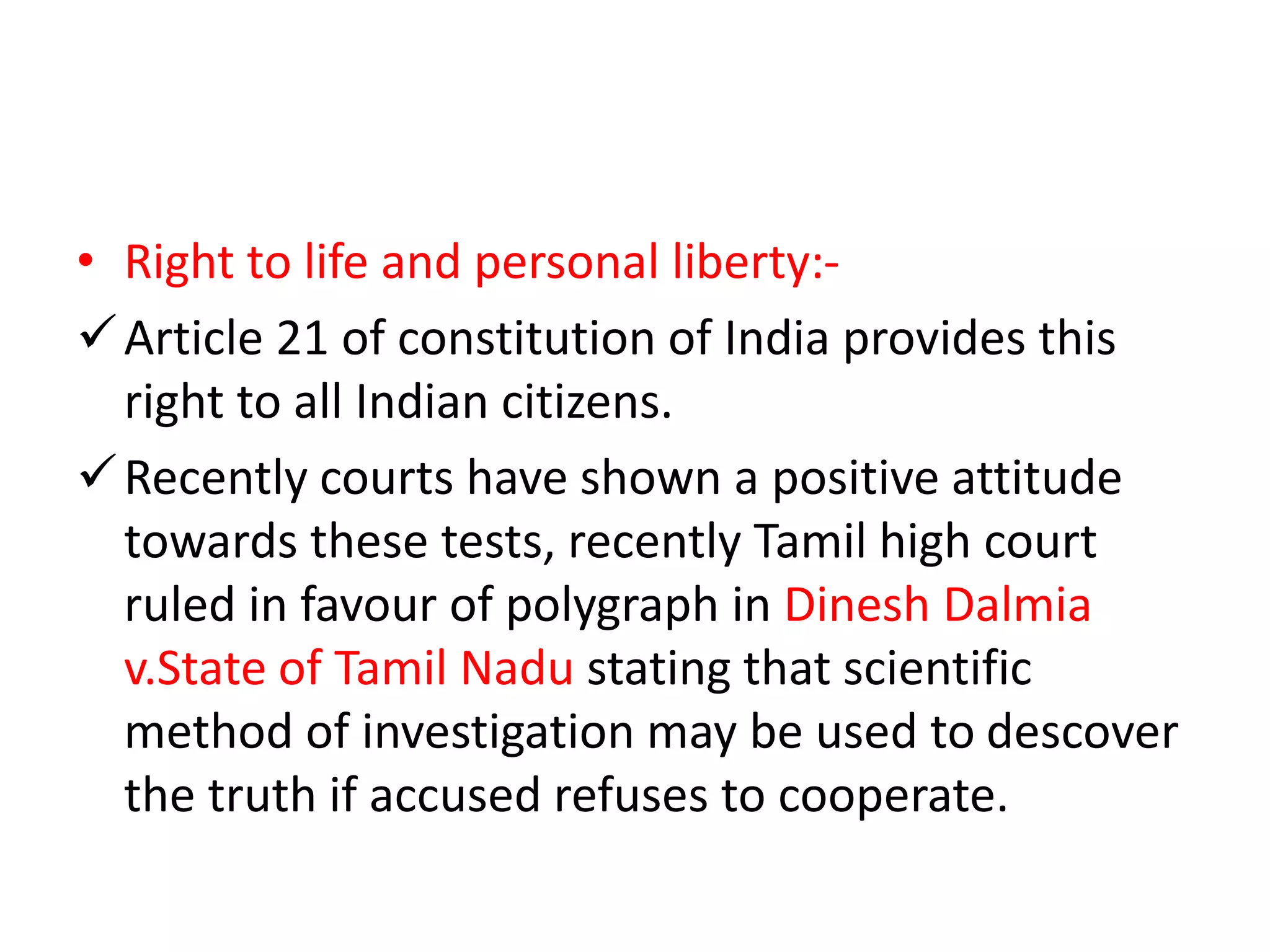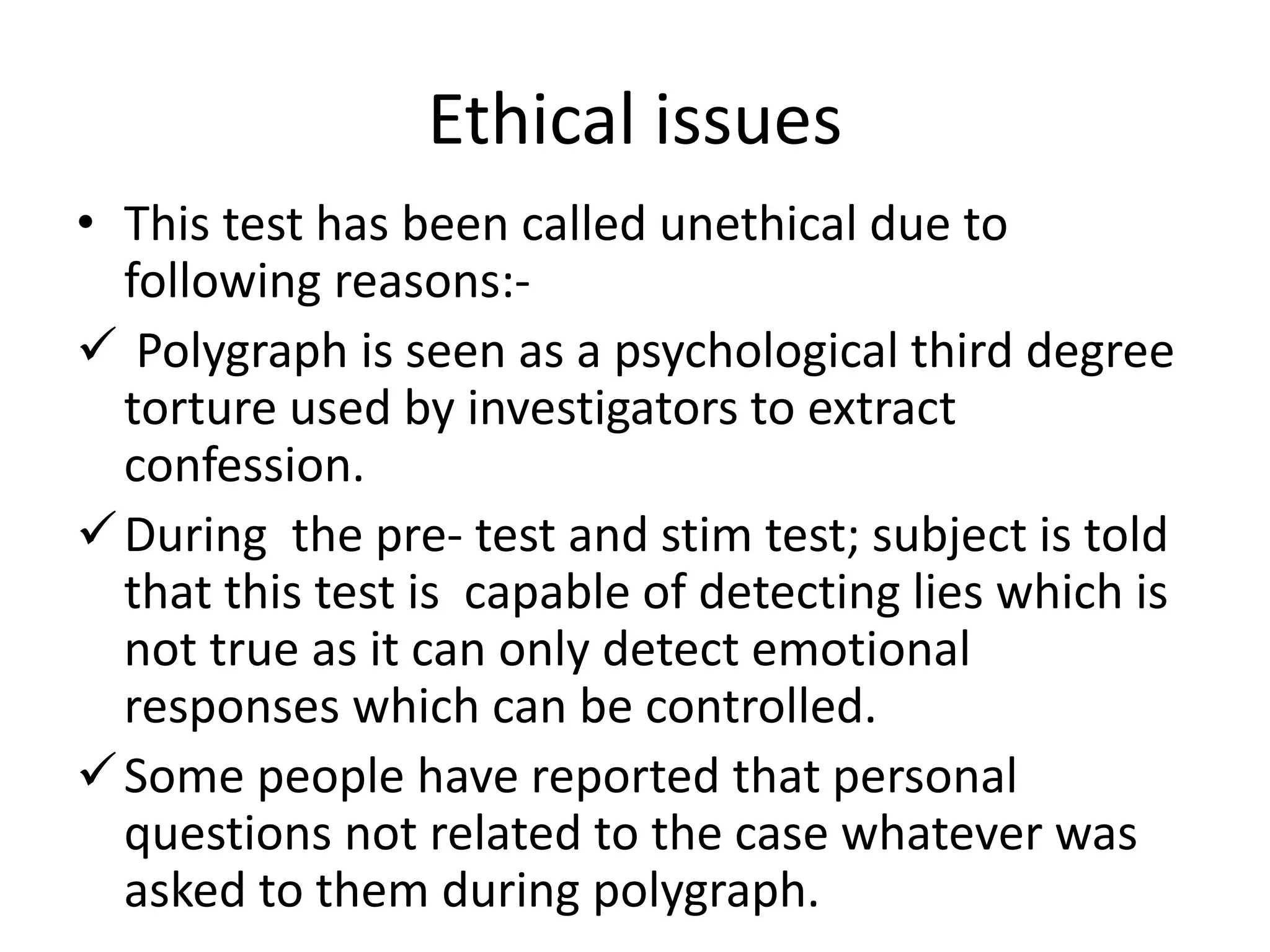This document provides information about Brain Electrical Oscillation Signature Profiling (BEOS) and polygraph techniques. BEOS is a non-invasive technique that detects a suspect's involvement in a crime by eliciting electrophysiological responses in the brain. It involves attaching an EEG cap to measure electrical activity in response to probes. Polygraph measures physiological indicators like respiration, sweating and heart rate that change when a person is lying or experiencing stress. Both techniques aim to detect deception by analyzing involuntary physiological responses, but have also faced criticism regarding their accuracy and infringement on rights.
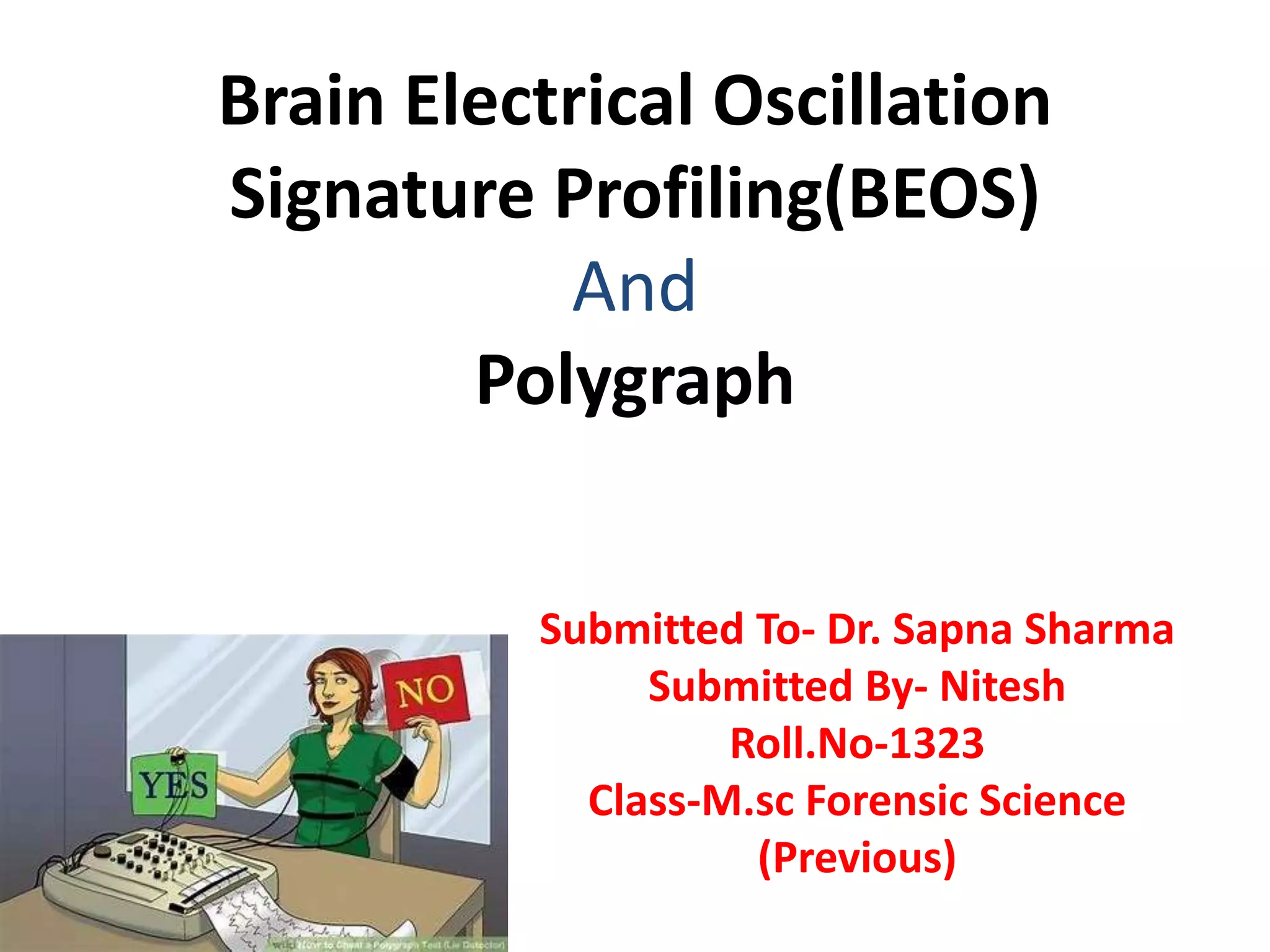
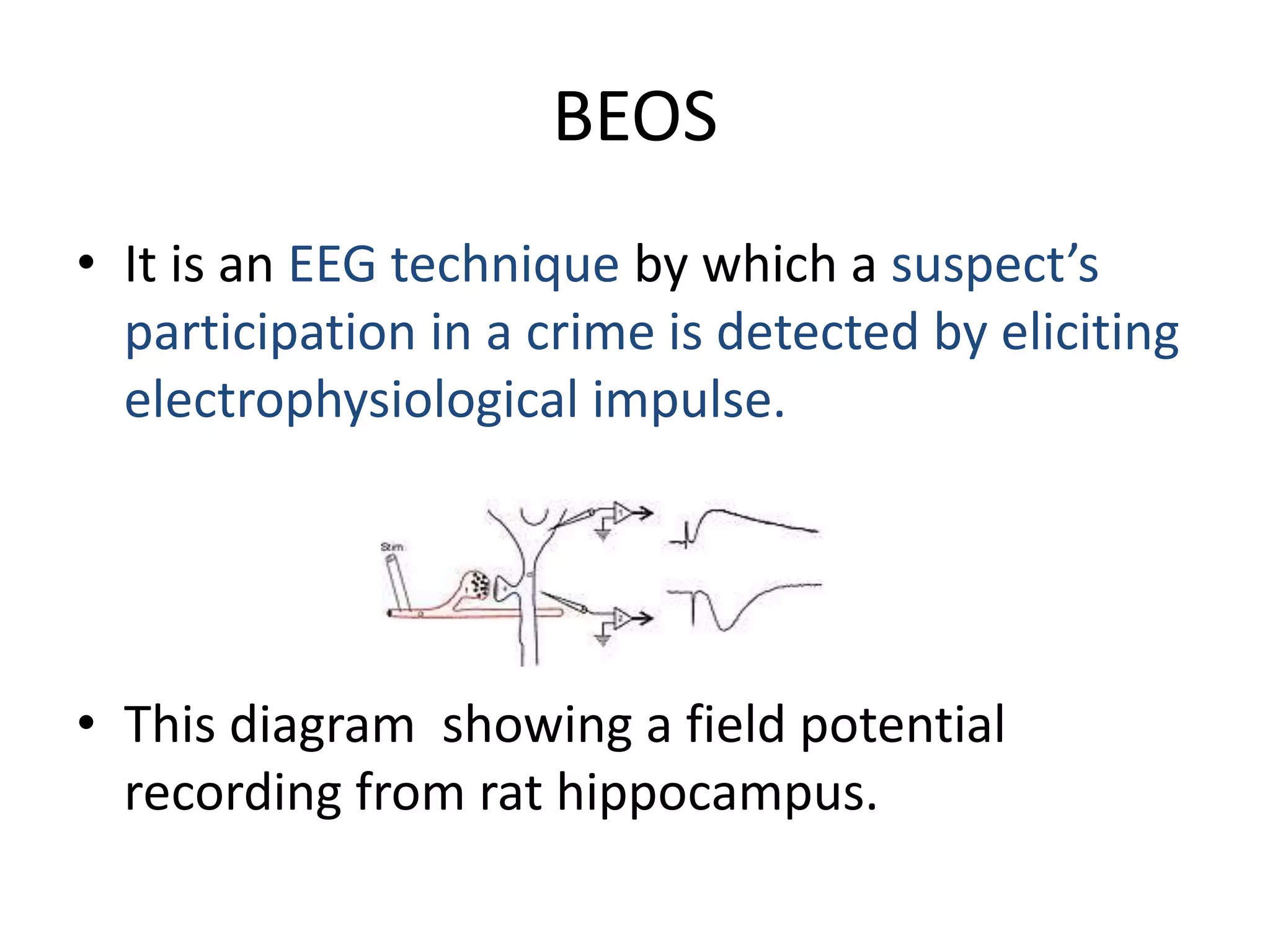



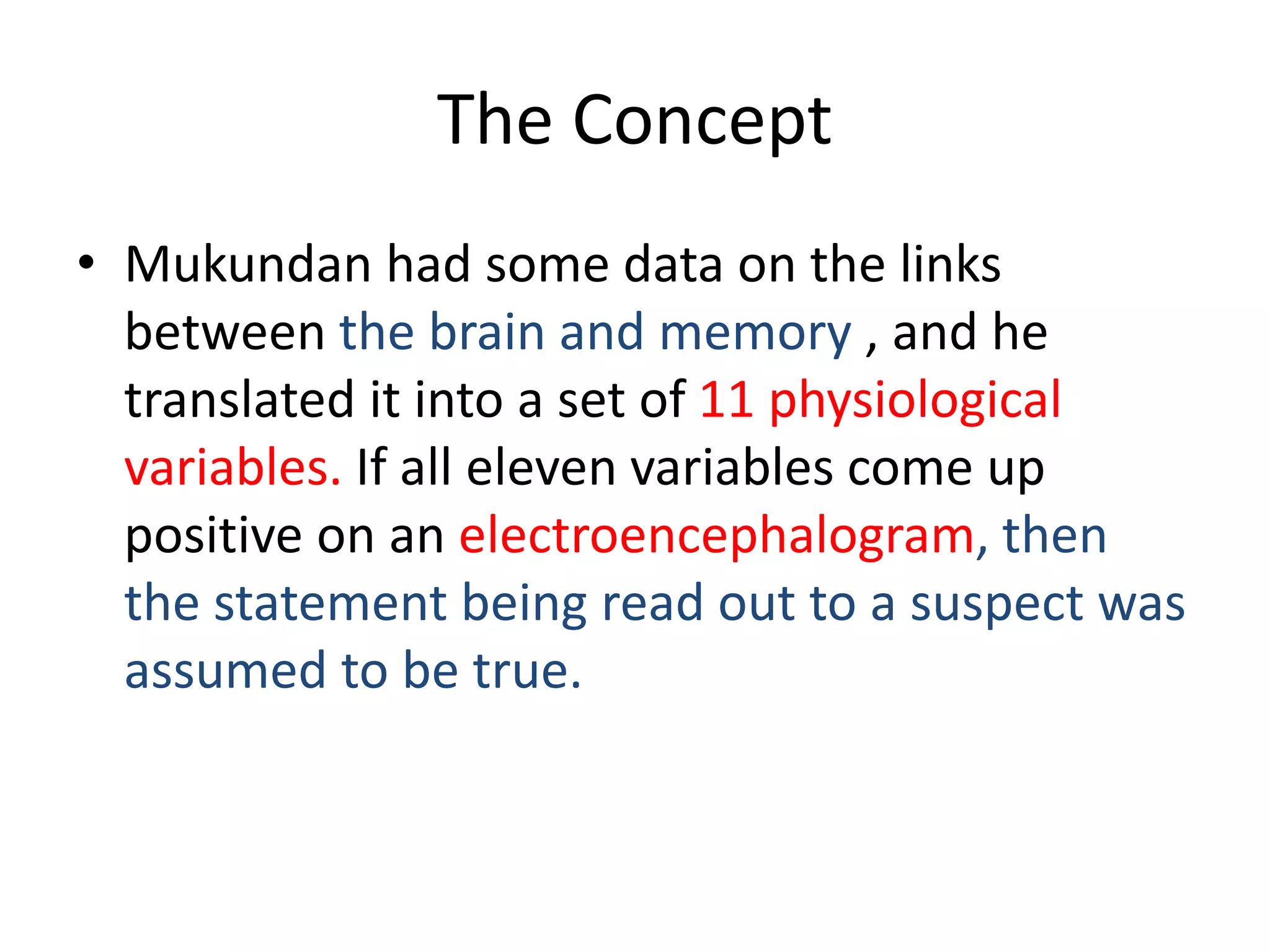
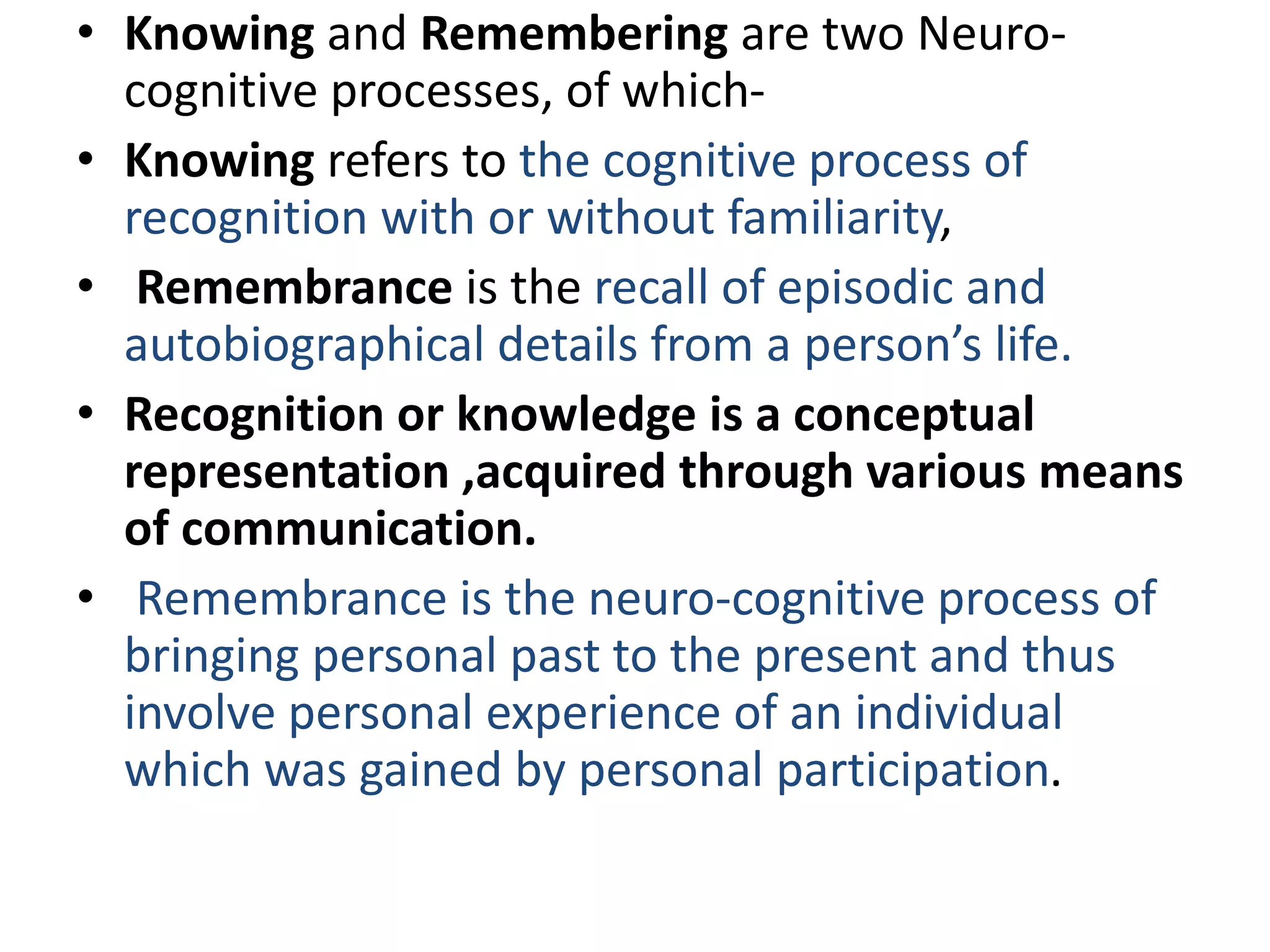
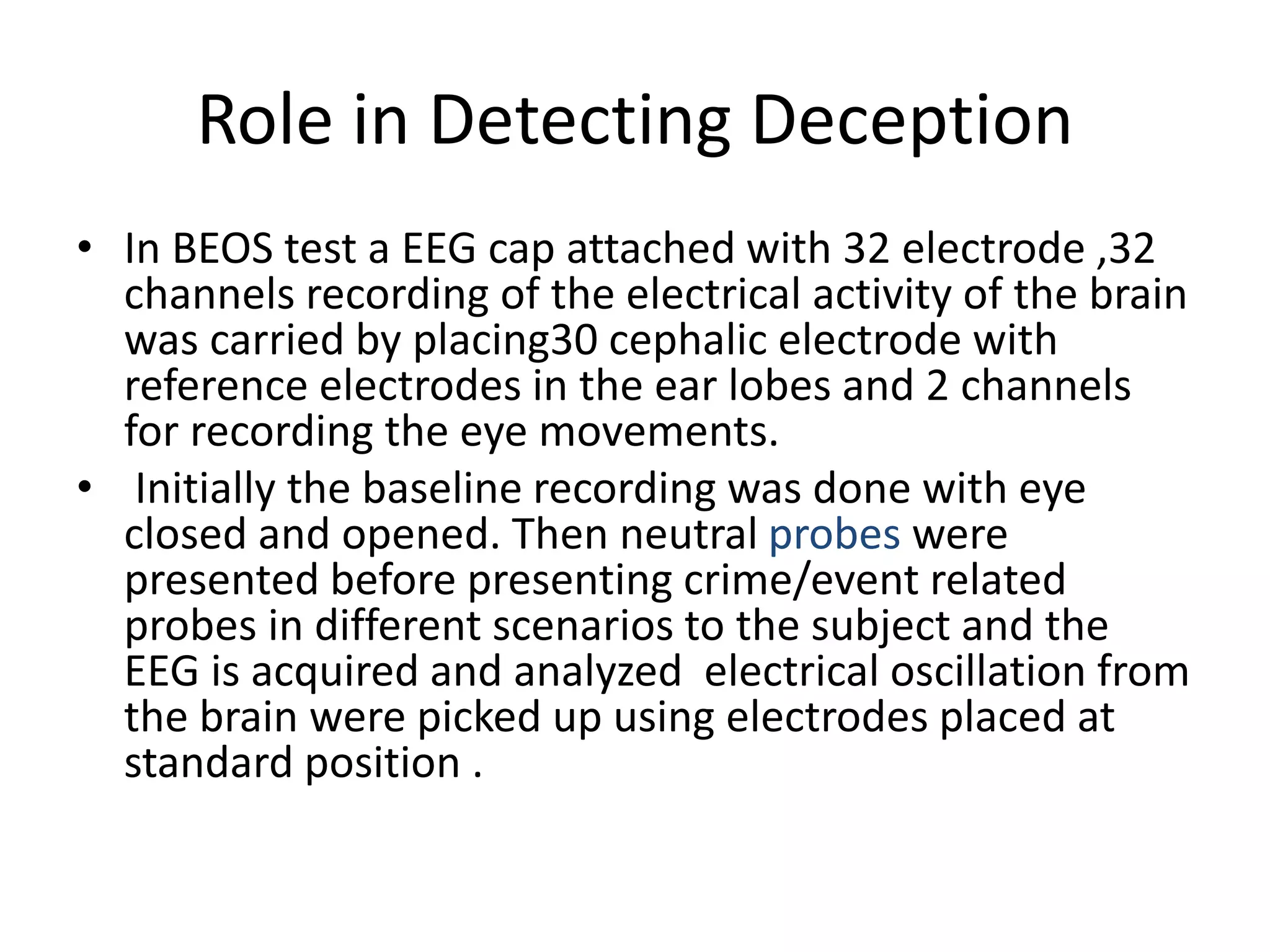
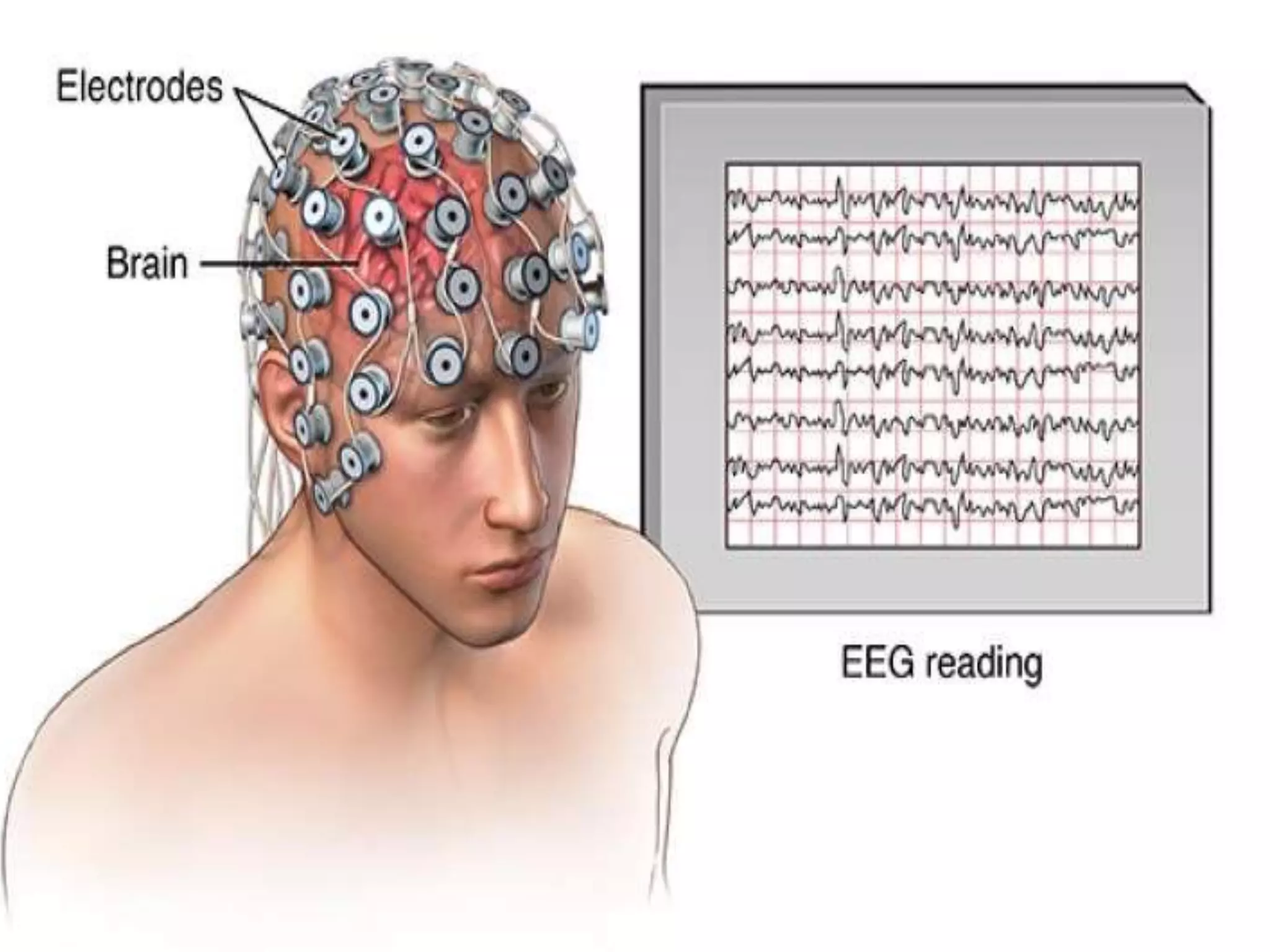
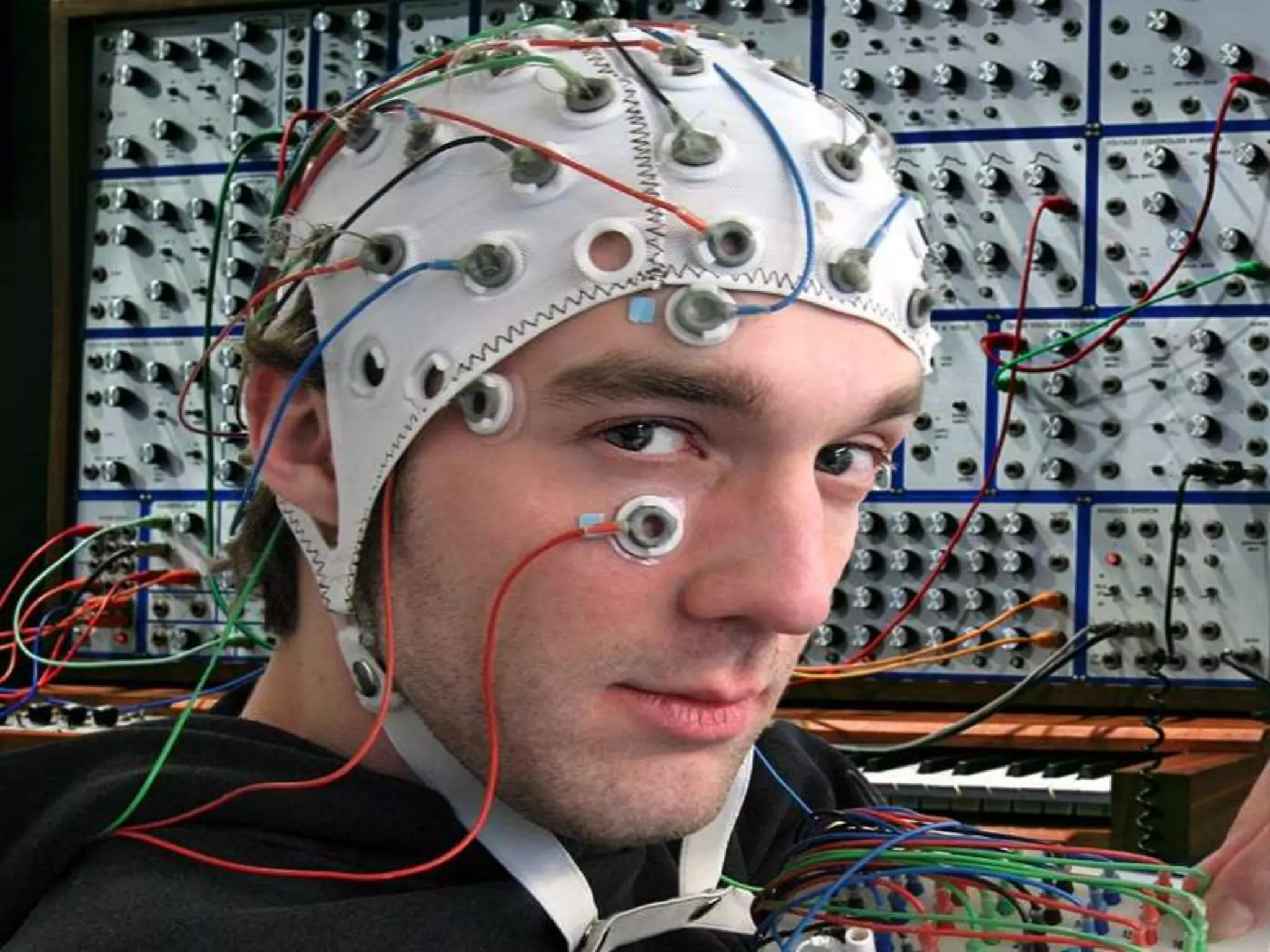
![• BEOS contains:-
Experiential Knowledge[EN]
Primary Processing[PP]
Encoding[EN]
Emotional Response[ER]
Activation Suppression[As]
Inattention[IN]
Probes](https://image.slidesharecdn.com/brainelectricaloscillationsignatureprofilingbeos-210703053216/75/Brain-electrical-oscillation-signature-profiling-beos-11-2048.jpg)
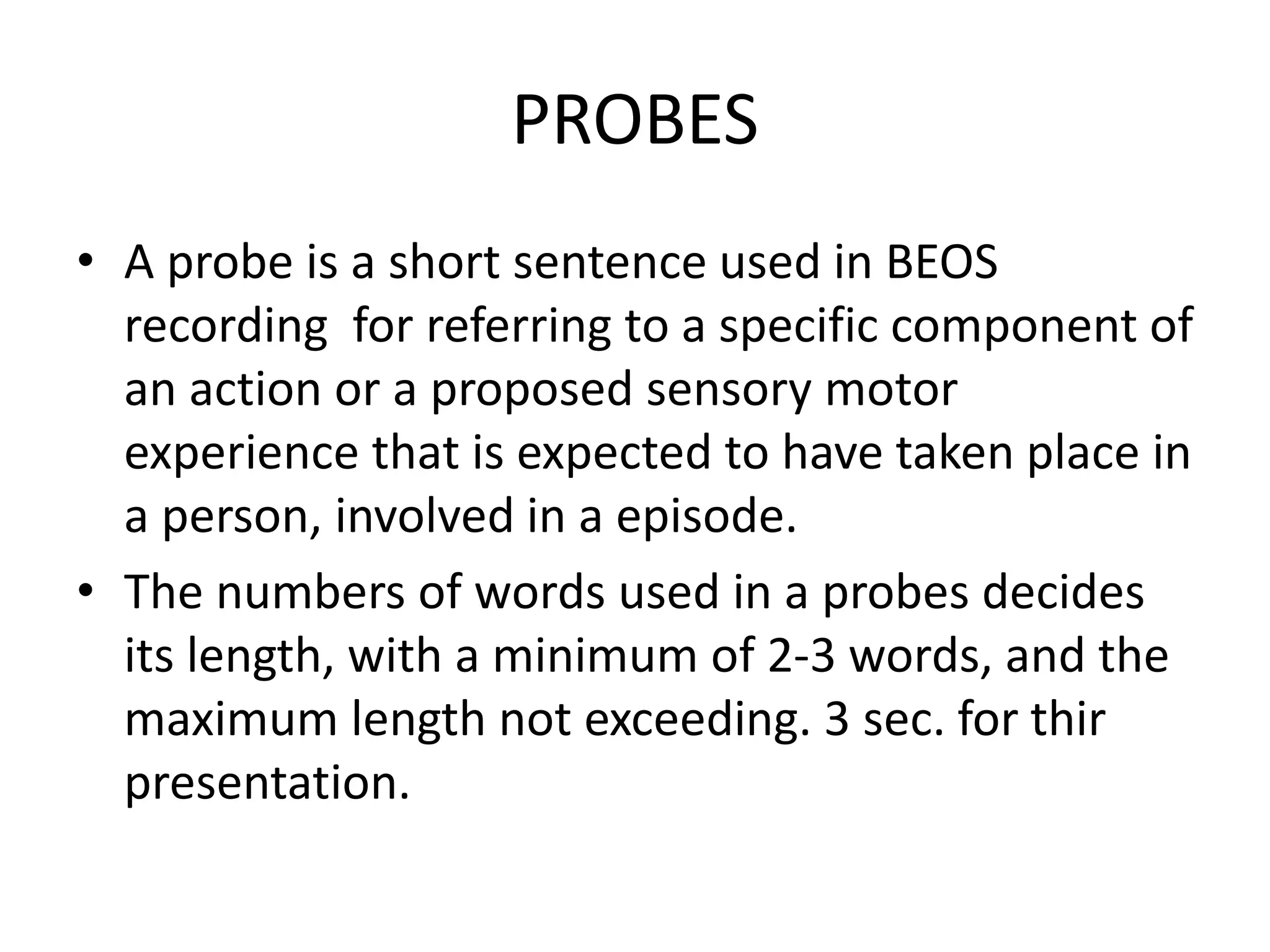

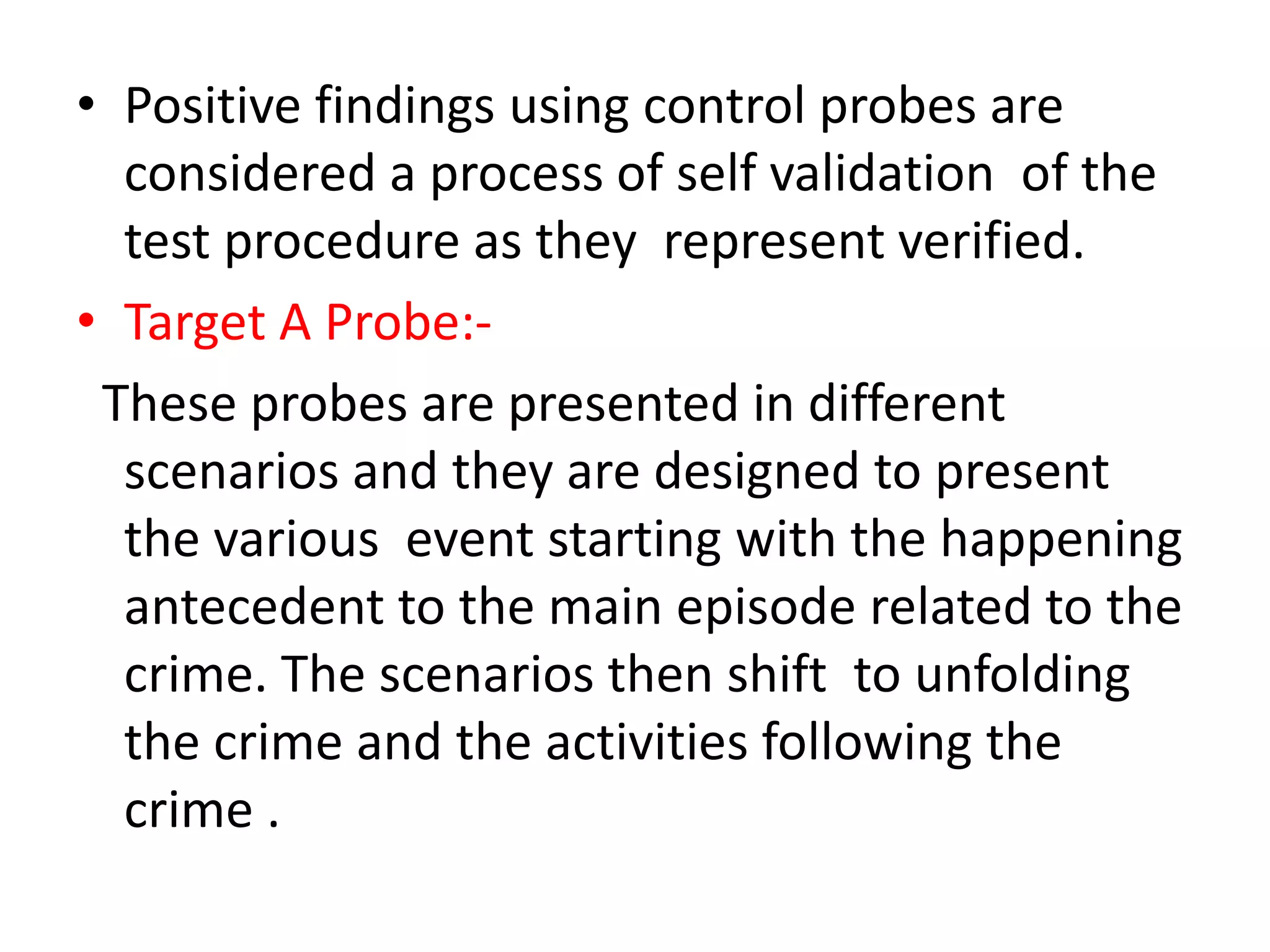

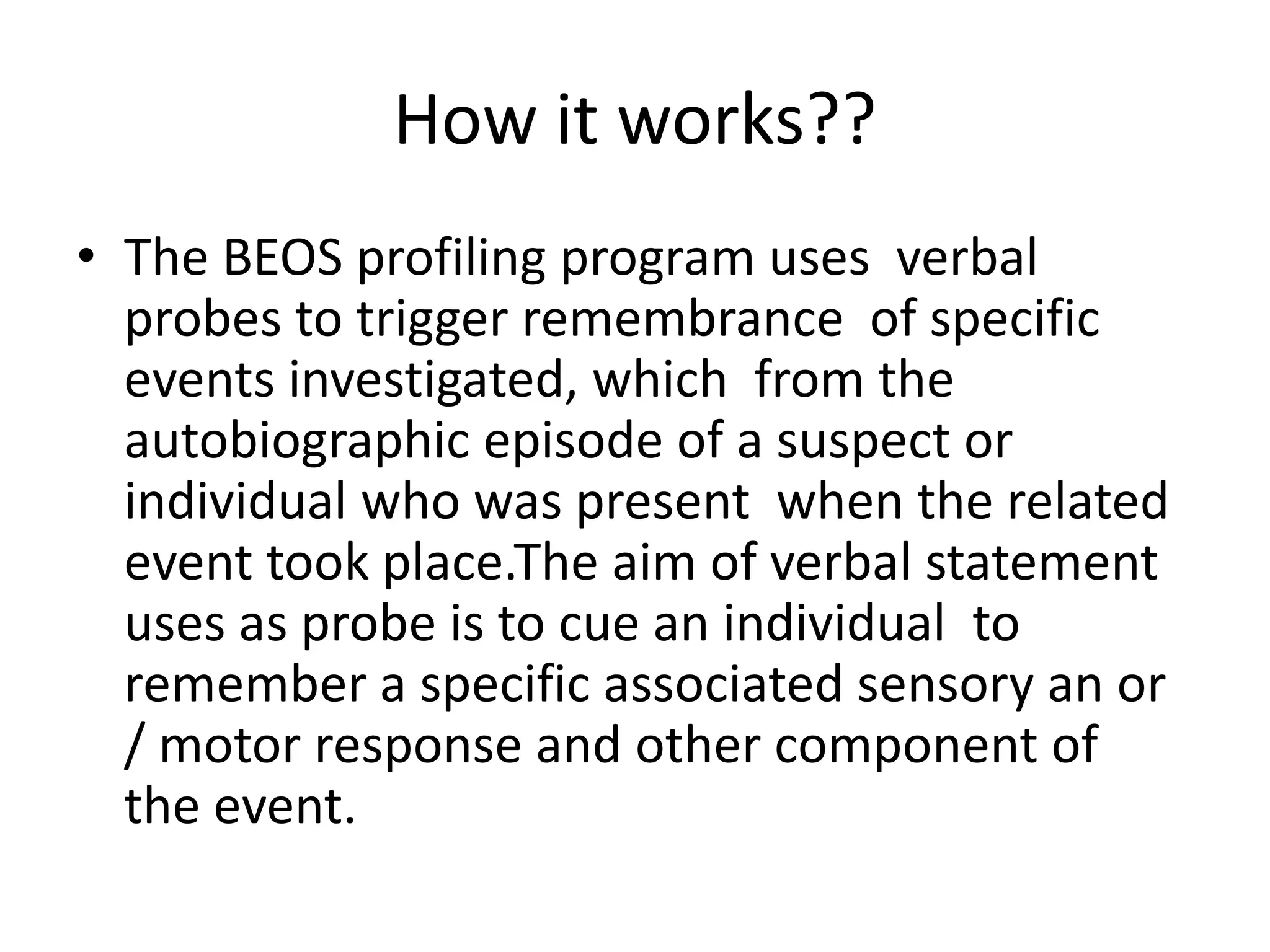
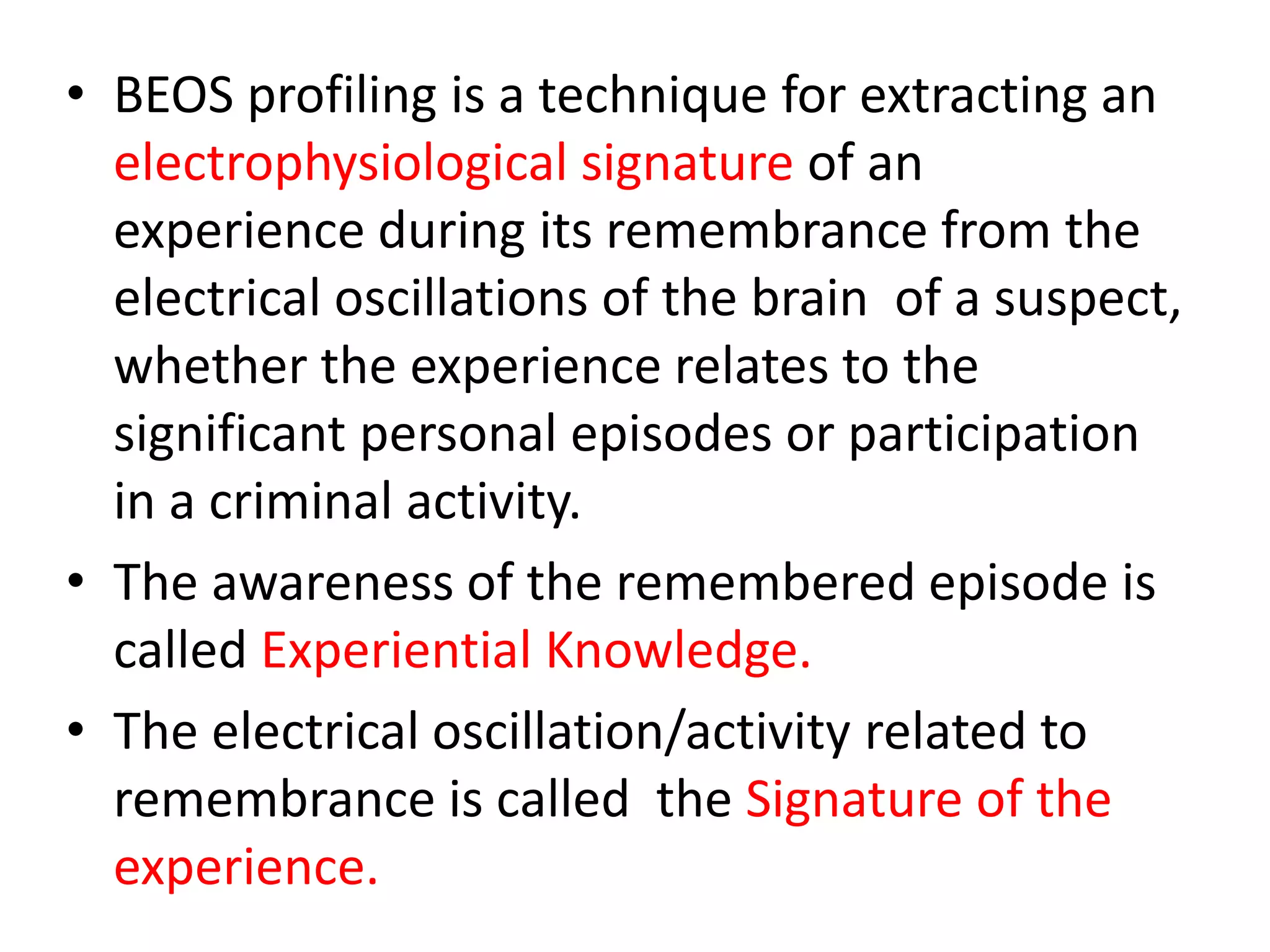
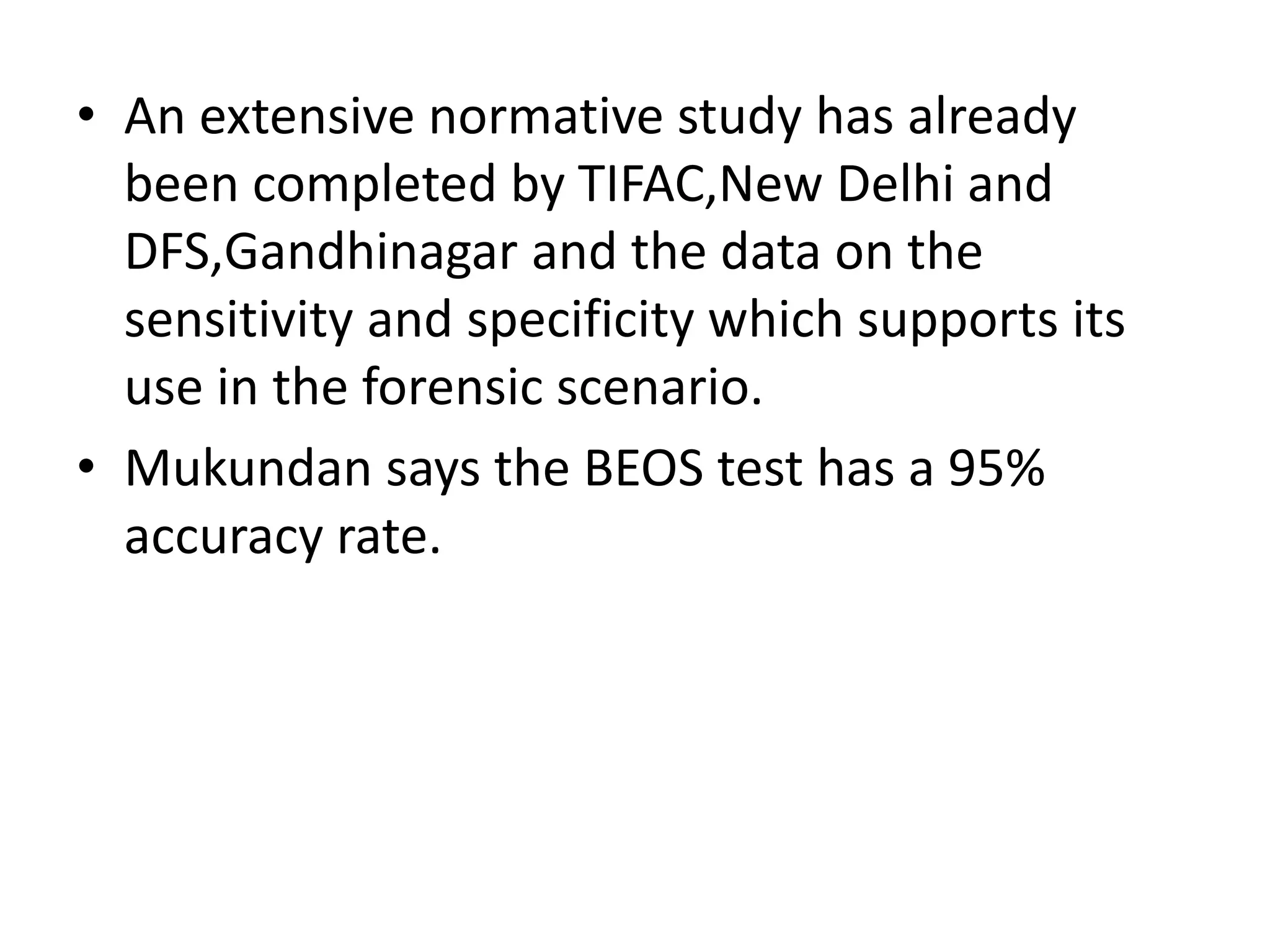
![Criticism
• Supreme court judgment on DDTs:-
DDT ( Deception Detection Tests) like Narco test,
Brain Mapping, and BEOS.
May 5,2010 SC states related to the involuntary
administration of DDTs for the purpose of
improving investigation efforts in criminal cases
are questioned on the account of violation of
fundamental rights like Right against self –
incrimination [article20(3)]and right to life and
personal liberty (article21).](https://image.slidesharecdn.com/brainelectricaloscillationsignatureprofilingbeos-210703053216/75/Brain-electrical-oscillation-signature-profiling-beos-19-2048.jpg)
